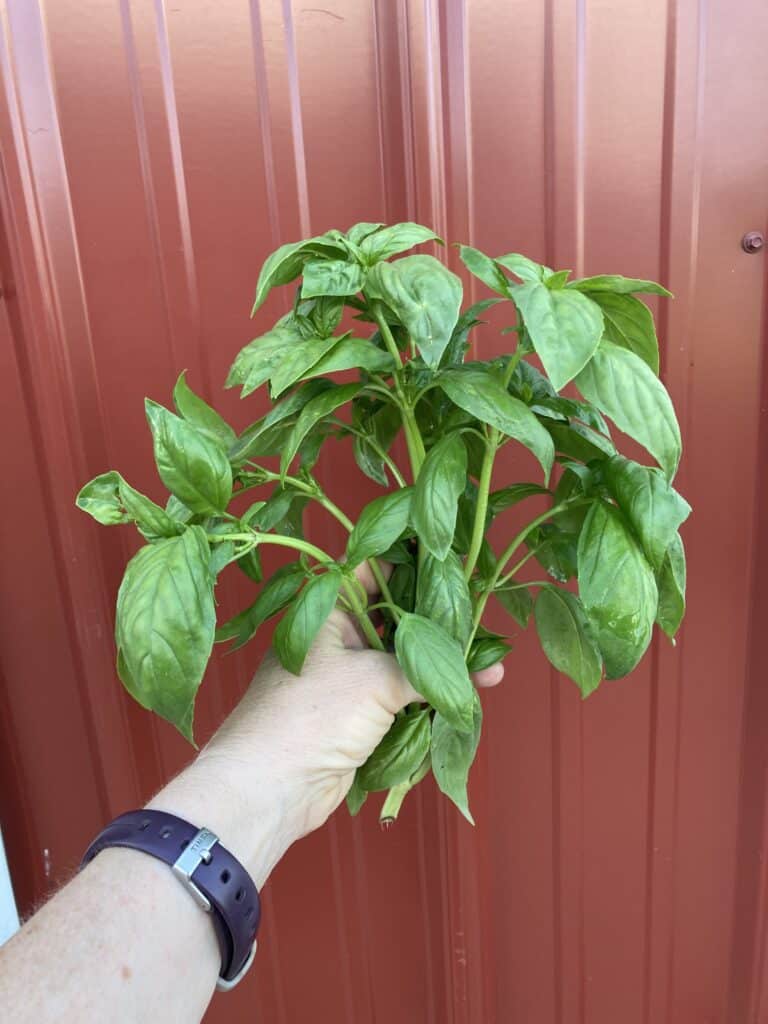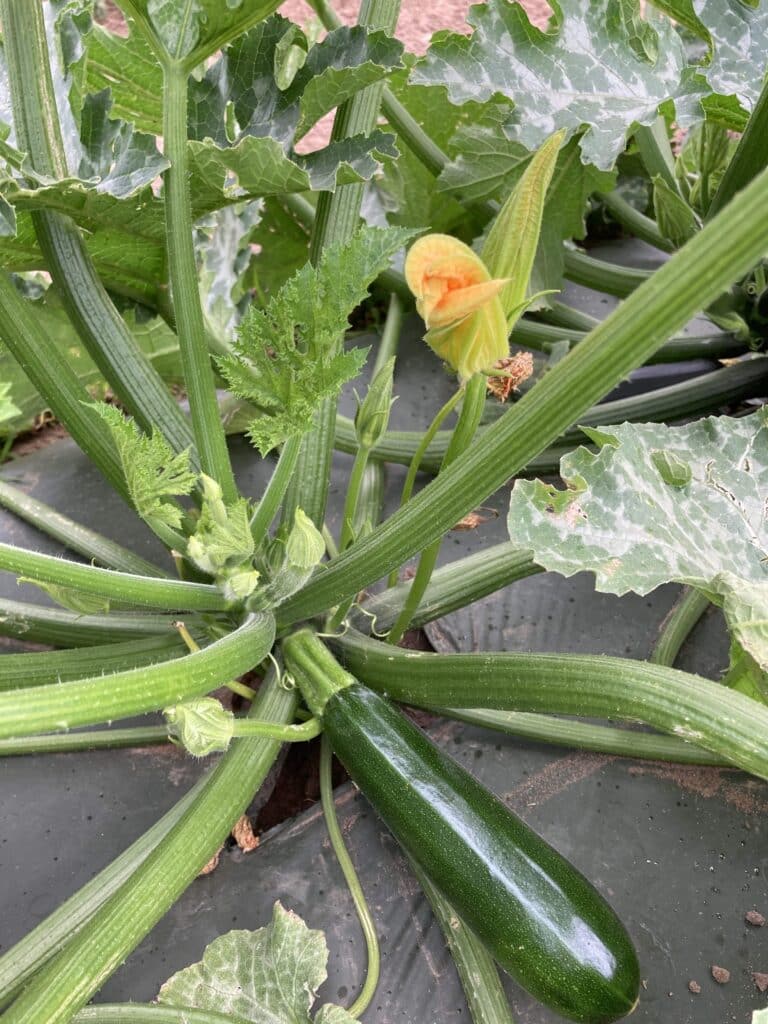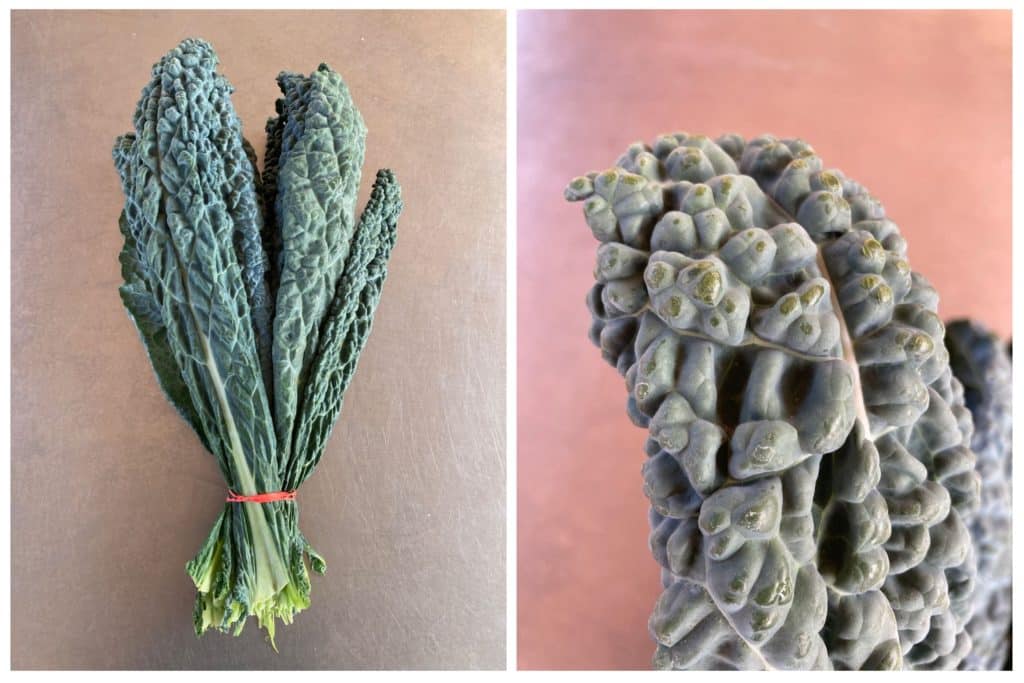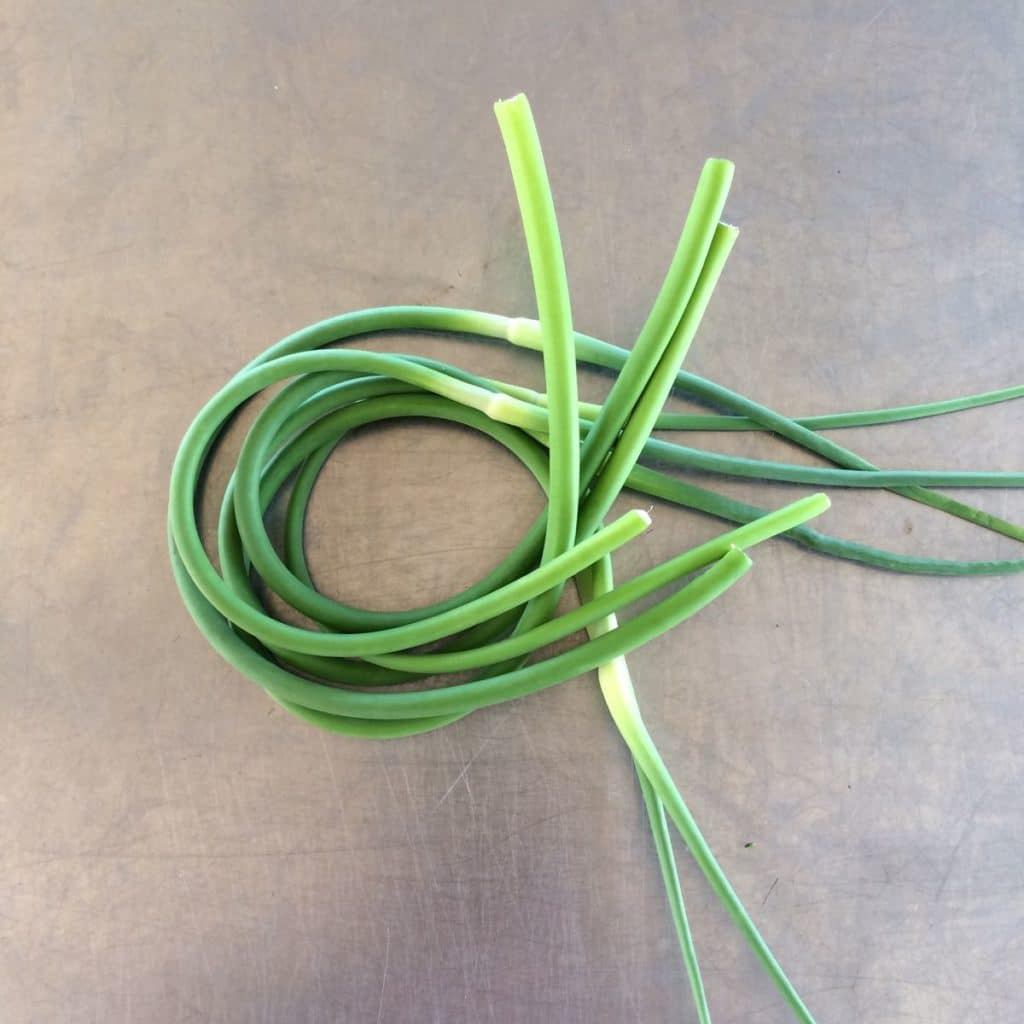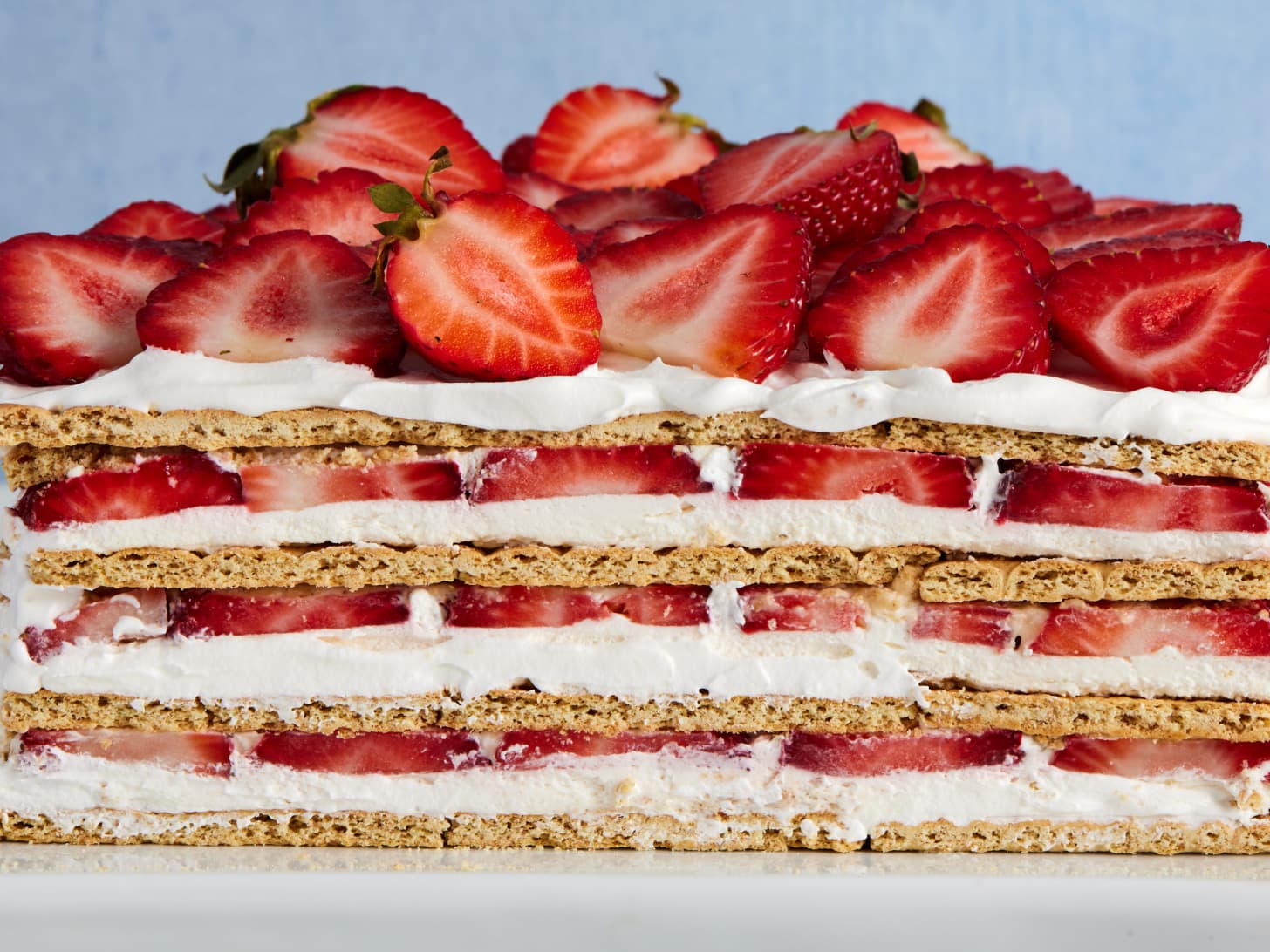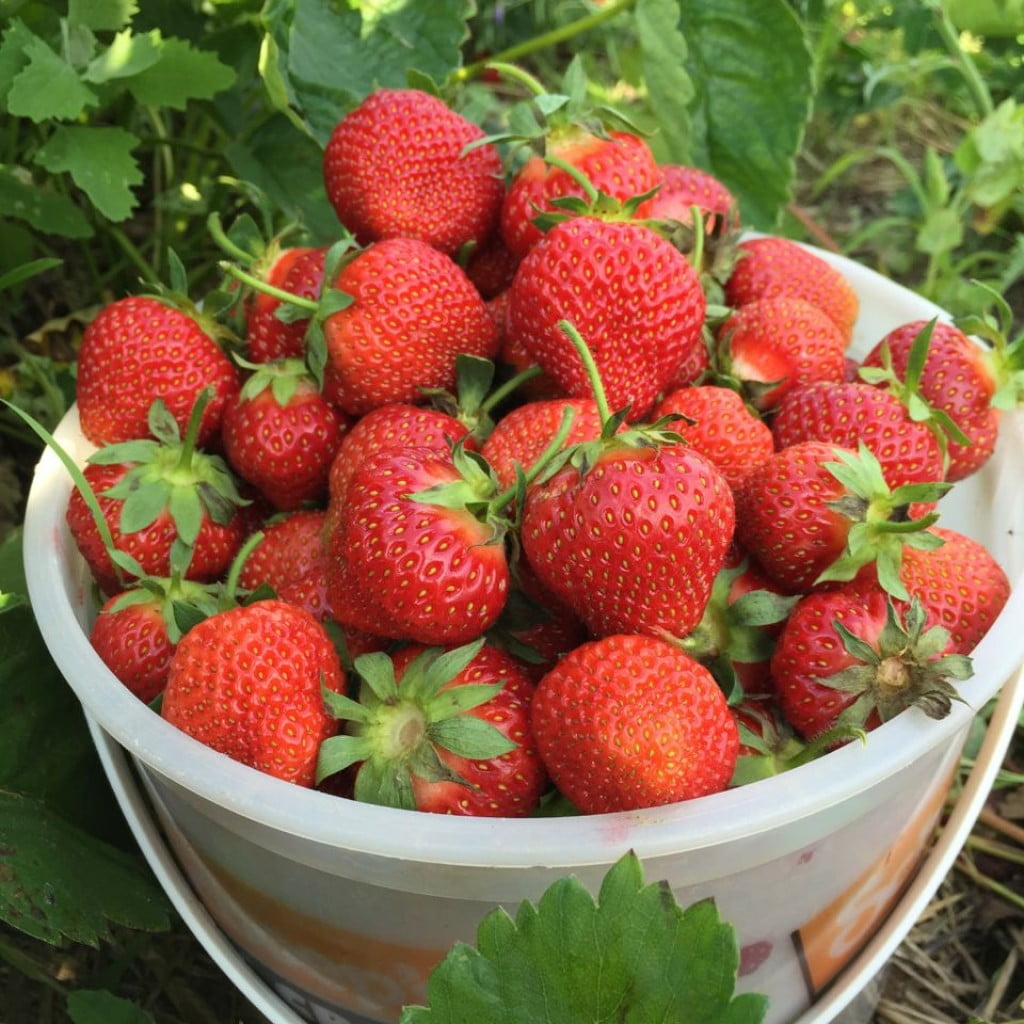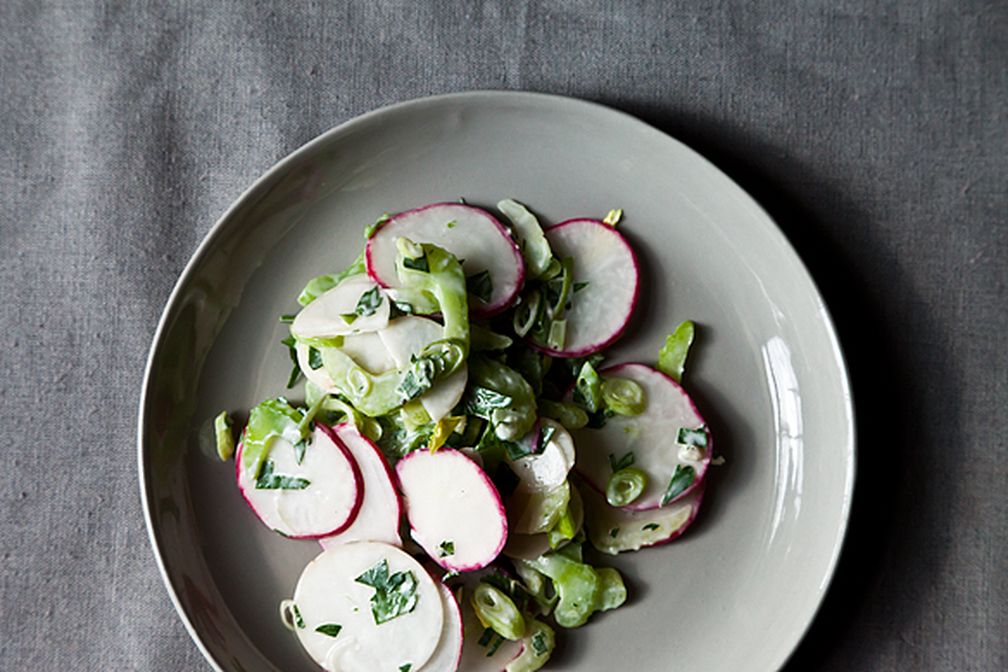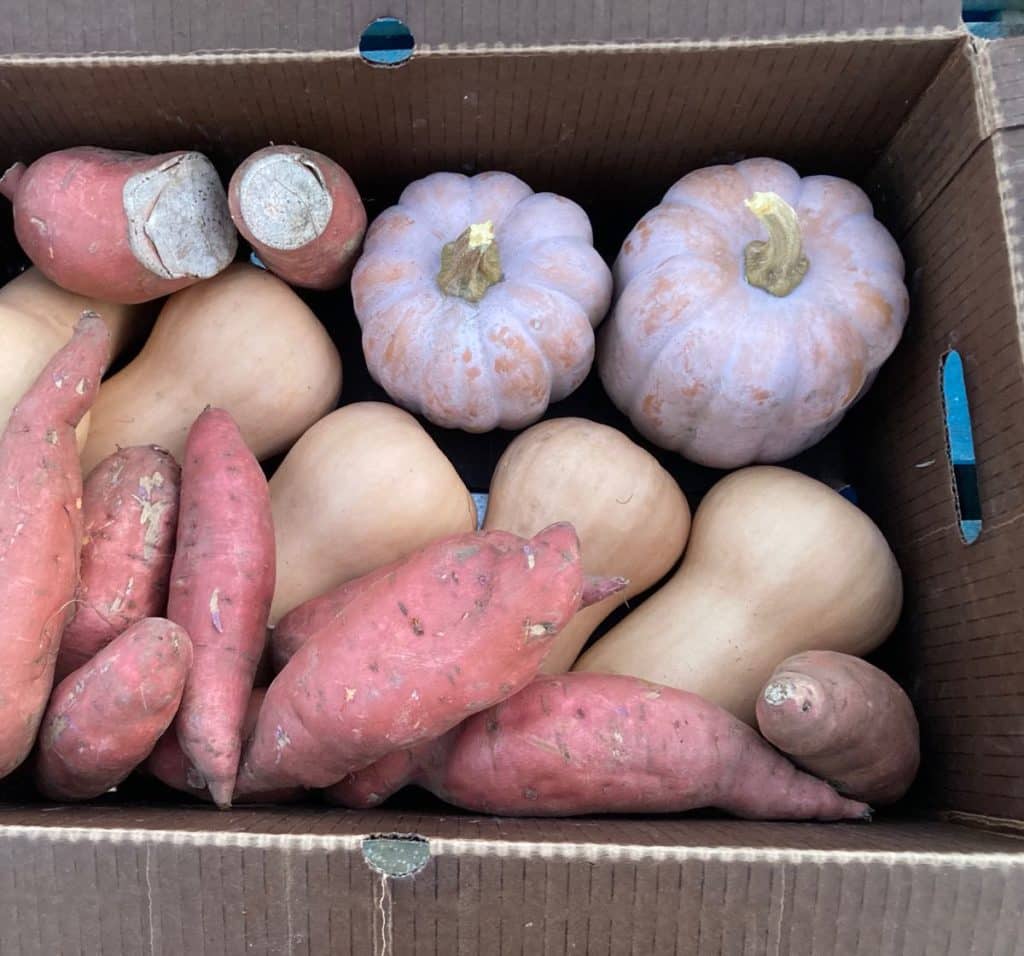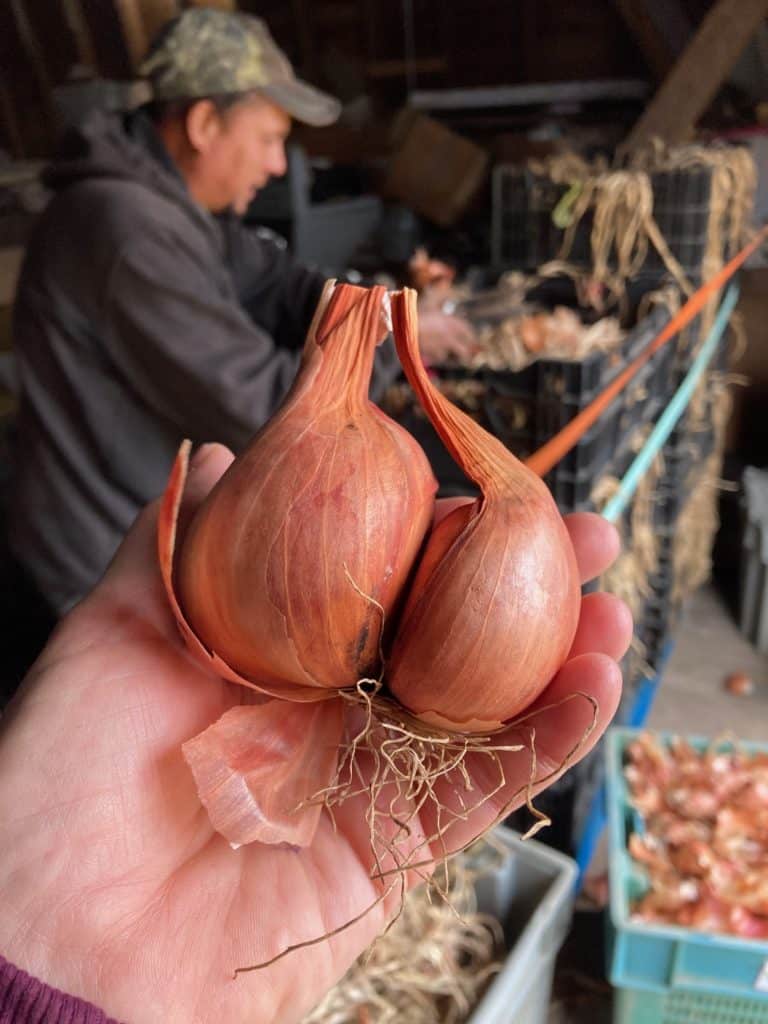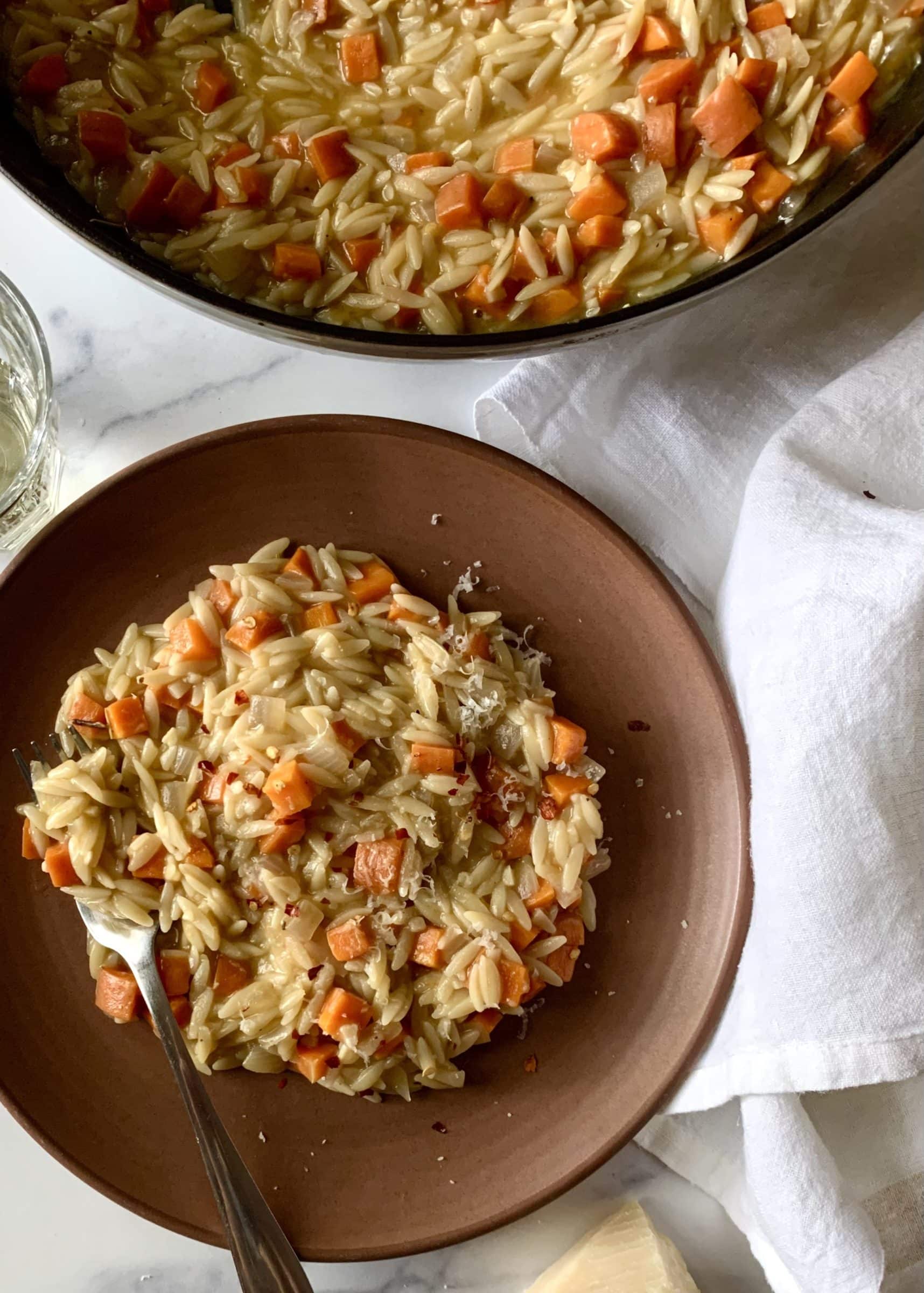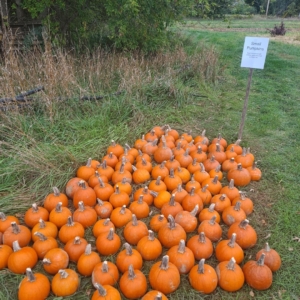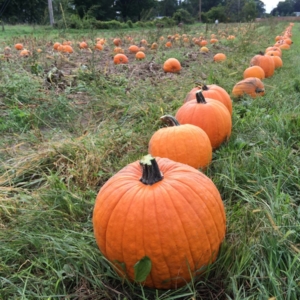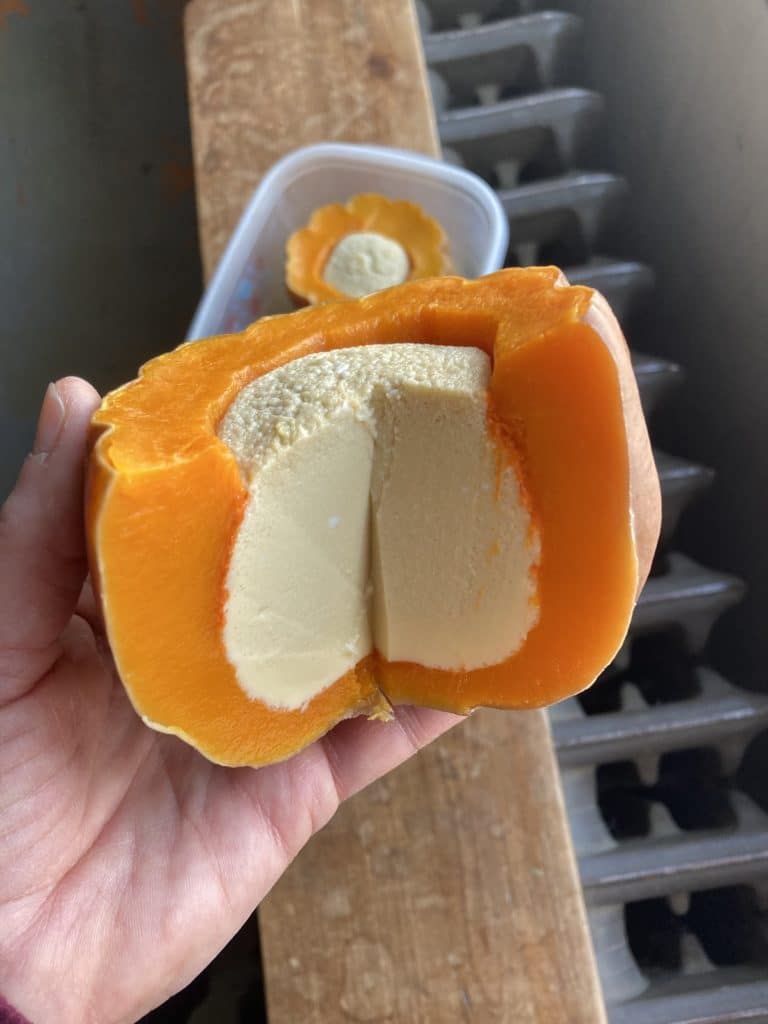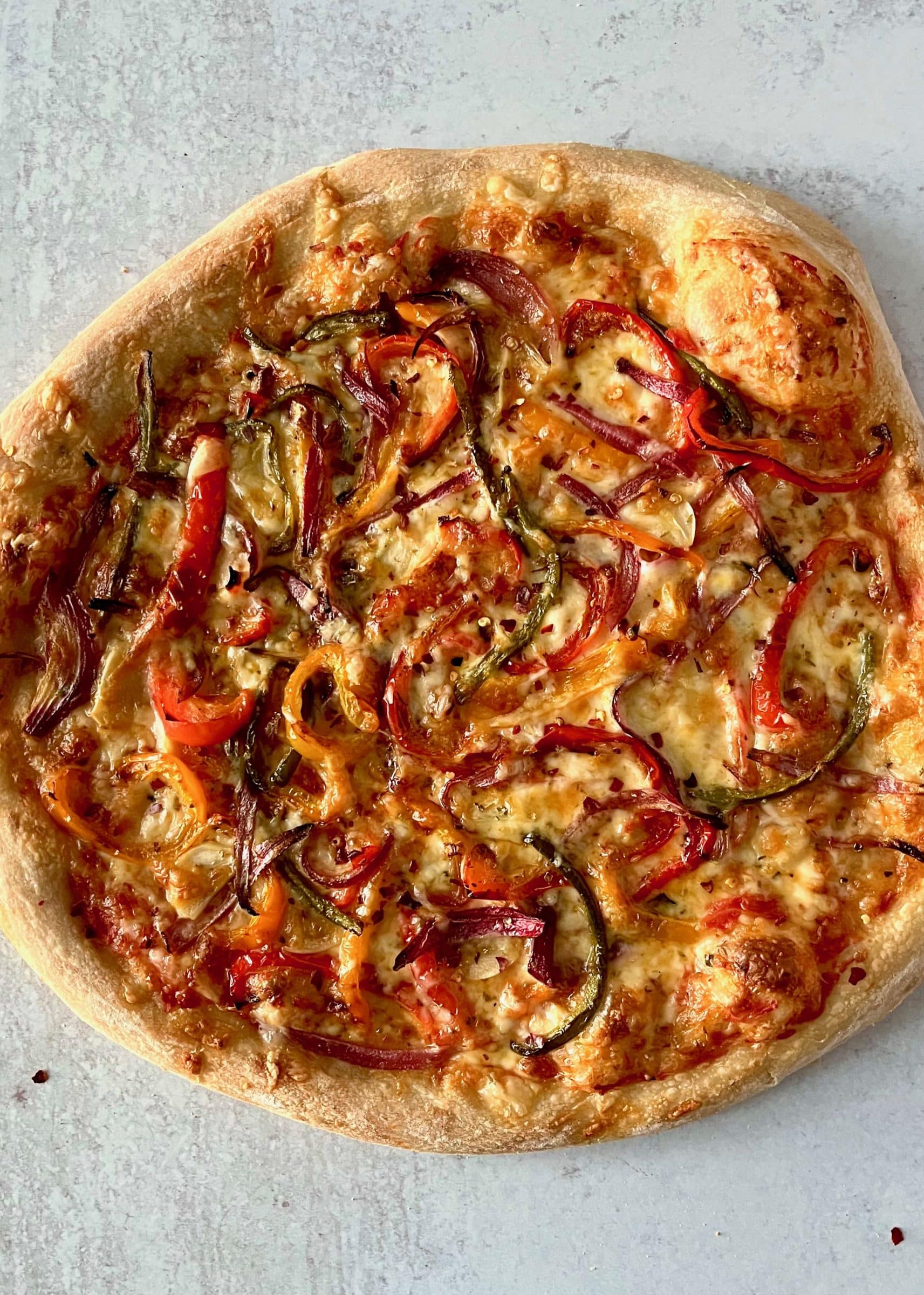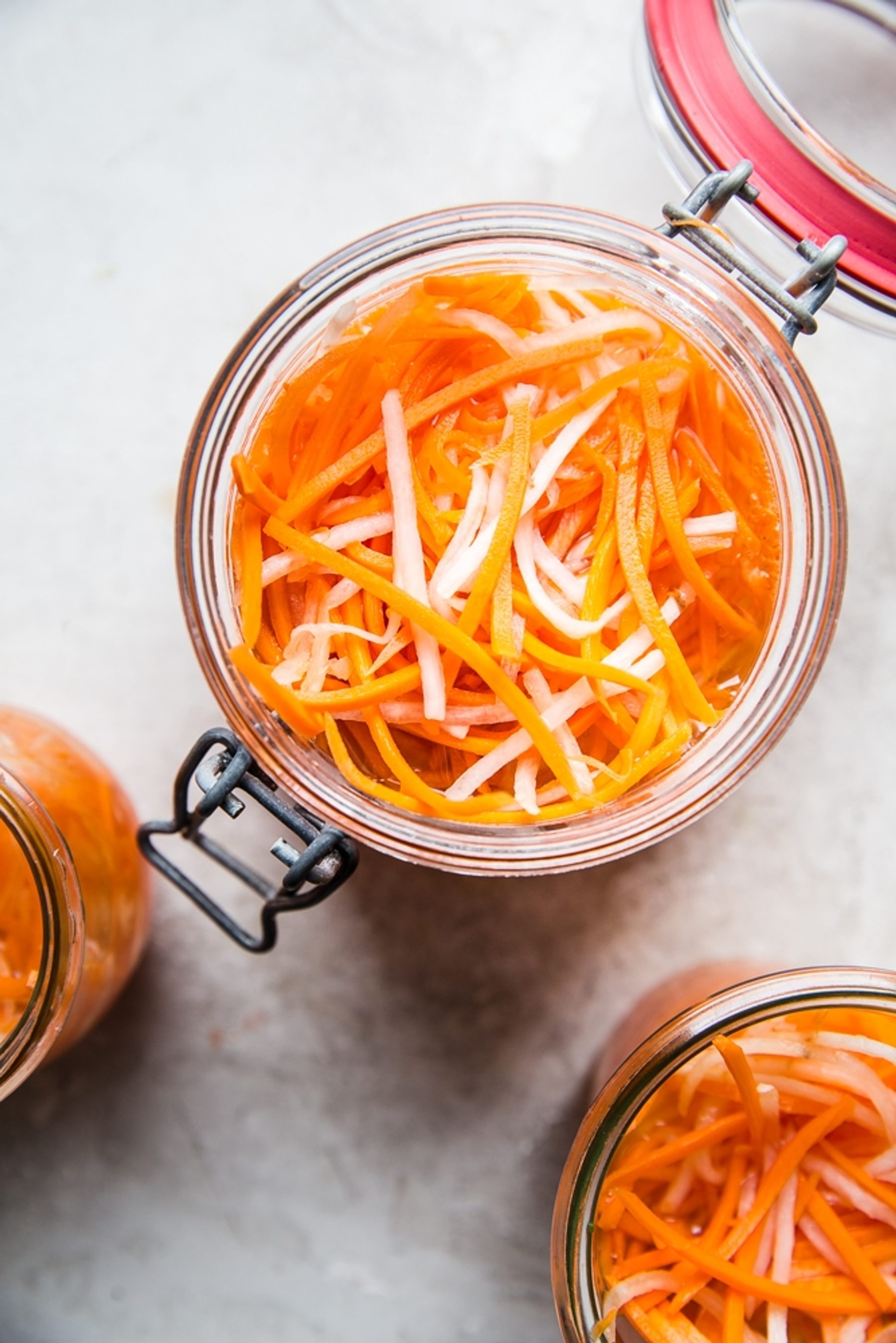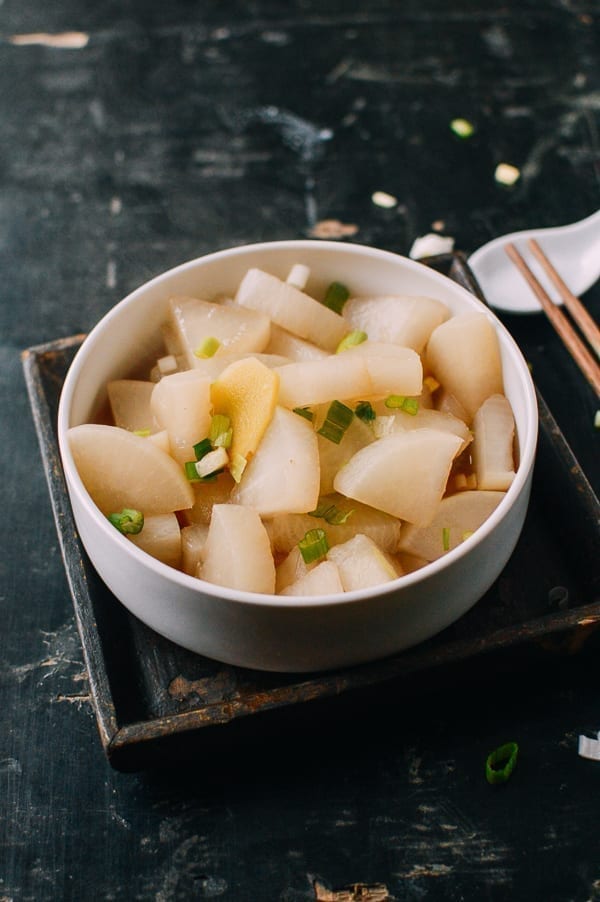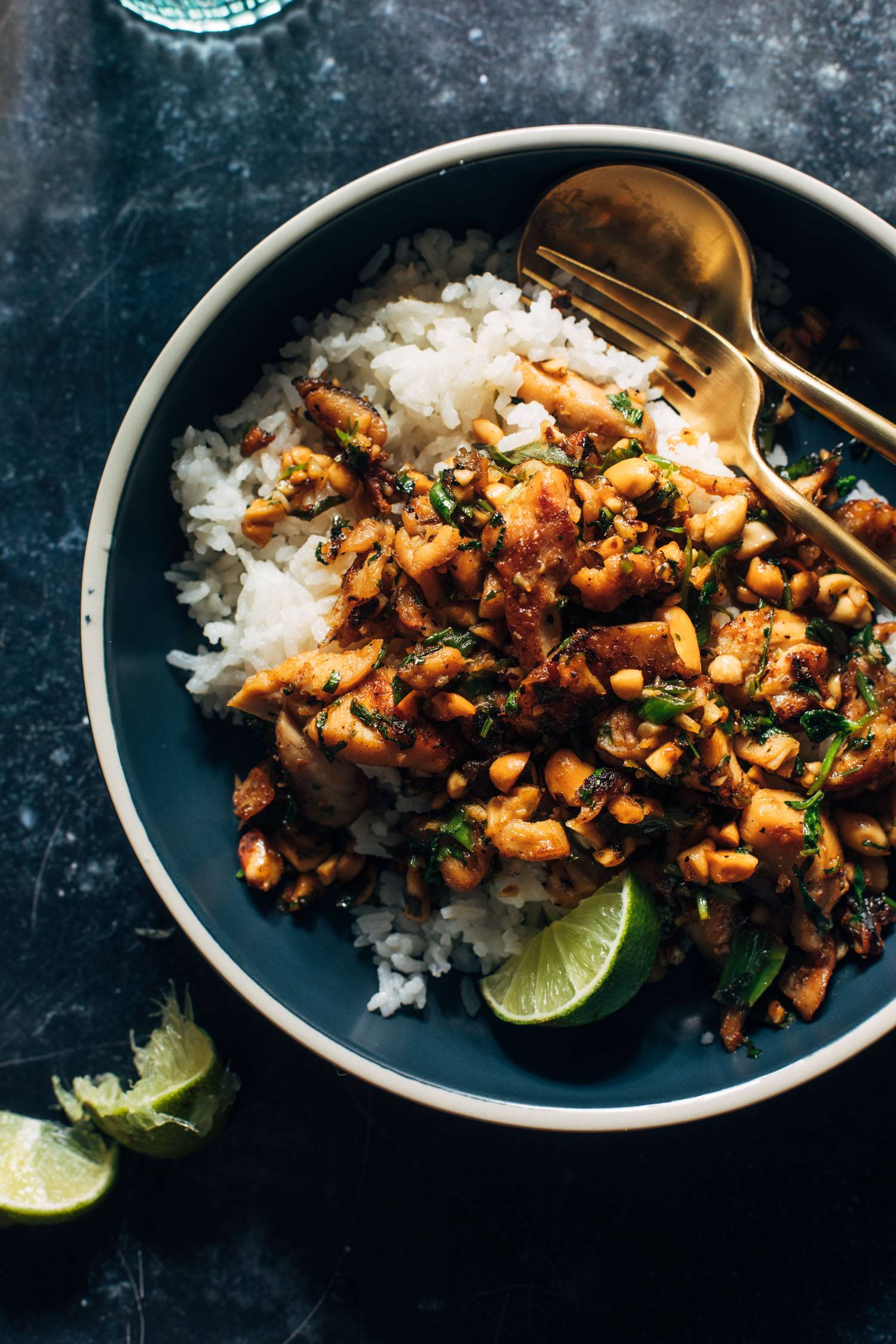Blog
Pop-Up CSA box, Friday October 4
- On: October 03, 2024
 0
0


Thank you all for signing up for this one-time delivery. Our produce is abundant right now and we are pleased to share with all of you! The farm is beautiful this fall. We are irrigating, because we must, but the dry, sunny weather is healthy for our crops.
Veggie List & Veggie Notes
October 4, 2024
Autumn Frost winter squash
Carrots, 2lb
Bok choy
Leeks, 1 or 2
Bell peppers, a mix of colors and #1 & #2 grades
Oranos snack peppers, 1.75 lb
Jalapeno chile (in the bag of Oranos), 1
Daikon radish, ~2 lb total
Basil, 1 small bunch
‘Autumn Frost’ squash – Store cool and dry. 60 F is ideal.
This beautiful frosted squash has both pumpkin and butternut squash breeding. They cook and taste like an unusually good butternut, with rich, smooth texture. This is a fairly new variety. The breeders really knocked it out of the park with this one. The skin is edible.
Carrots – The first harvest of fall carrots!
Storage: Refrigerate.
Bok choy (rosette with thick white stems and green leaves) – This Asian green is good for stir-frying or sautéing or in soup. You can think of the stems and leaves as two separate vegetables. The stems require longer cooking. The leaves will cook almost as quickly as spinach. Bok choy stores well, so feel free to pull off leaves as you need them, or use the whole head at once.
Storage: Refrigerate in a plastic bag or other container.
Leeks (look like big scallions) – These alliums have a milder flavor than onions. Nonetheless, they can be used in recipes that call for onions. To wash, split the leek lengthwise, from the green tops about halfway to the base, leaving the base intact. Rinse well under running water, separating the layers to flush. If necessary, split the leek further if soil has penetrated more than halfway down the leek. Shake dry. Leeks are generally eaten cooked. They can be sauteed, steamed or roasted. Intact leeks will store 2 to 3 weeks if covered loosely and refrigerated. The outer leaves will yellow. Just peel them off and discard. The inner leek layers will be fine.
Bell peppers – We are sending a mix of #1 and #2 grade bell peppers. All are ripe and delicious. Examine your peppers. Use any with flaws first.
Storage: Refrigerate.
Korean radishes – These are a favorite vegetable among our farm crew. Crunchy Korean radishes are sweeter and milder than Japanese daikon radishes and come in a more manageable size. They contain lots of water, which makes them easy to pickle or ferment. You’ll receive at least two of the colors we grow: white, red and purple.
Storage: Refrigerate.
Basil – This batch is very fragrant. We harvested on a windy day. If your basil looks wilted, submerge in room temperature water for five minutes.
Storage: Trim the stem ends. Store at room temperature in a jar of clean water, like a flower bouquet. Chop finely, mix with olive oil and freeze for winter.

Your jalapeño chile will be in the bag of sweet Oranos peppers. Oranos are orange or orange & green. The jalapeño will be green, red, or green & red.
RECIPE IDEAS from BETH
Let’s brainstorm Oranos snack peppers
We love these flavor bombs and are sending a generous bag. Here are some ideas.
The perfect lunchbox snack
You could eat every one as a snacks – they are perfect in a lunchbox. Pack them whole or de-seed, cut in half and smear with a dollop of goat cheese.
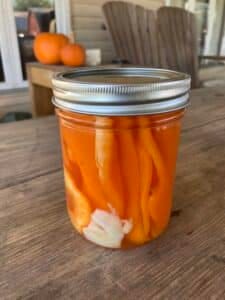
Pickled peppers
You can pickle any type of pepper but Oranos are especially beautiful. Here’s my method.
Snack peppers, about 3 or 4 peppers per pint
Garlic, 1 crushed clove
Brine (enough for one packed quart jar):
Water, 2 cups
White vinegar, 3 Tbsp
Salt, 1.5 Tbsp
1. Mix the brine ingredients and stir at room temperature to dissolve.
2. Clean a pint or quart jar.
3. Slice your peppers in strips. Pack into the clean jar. Break the crushed garlic clove into a few pieces and tuck into the jar.
4. Pour brine to the top. Seal with a lid. Slowly rotate to let bubbles escape to the top.
5. Refrigerate for one day before eating.
.
.

Appetizers / Charcuterie plate
Google ‘appetizer snack peppers’ for a wealth of options. Sliced Oranos are great for dipping in hummus or cheese dip. Add some sliced carrots, red peppers, and daikon to the plate for crunch and beauty.
Korean radish
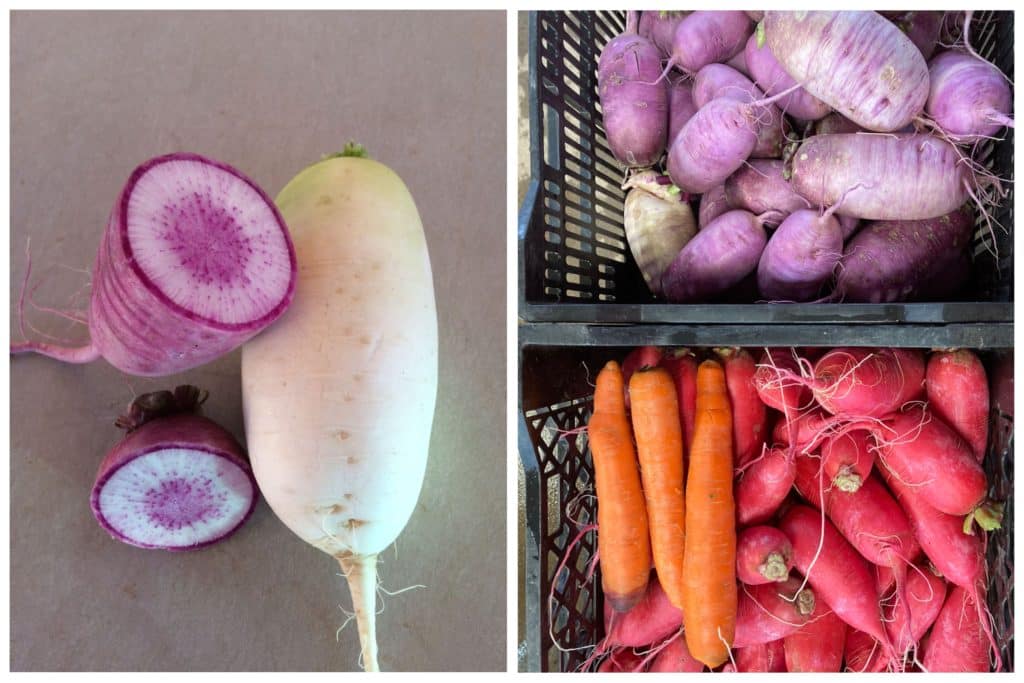
You will receive at least two of the daikon colors we grew this year; white, red and purple.
This is a favorite vegetable among our farm crew. These crunchy Korean radishes are sweeter and milder than Japanese daikon radishes and come in a more manageable size. They contain lots of water, which makes them easy to pickle or ferment.
Here are some of my favorite uses.
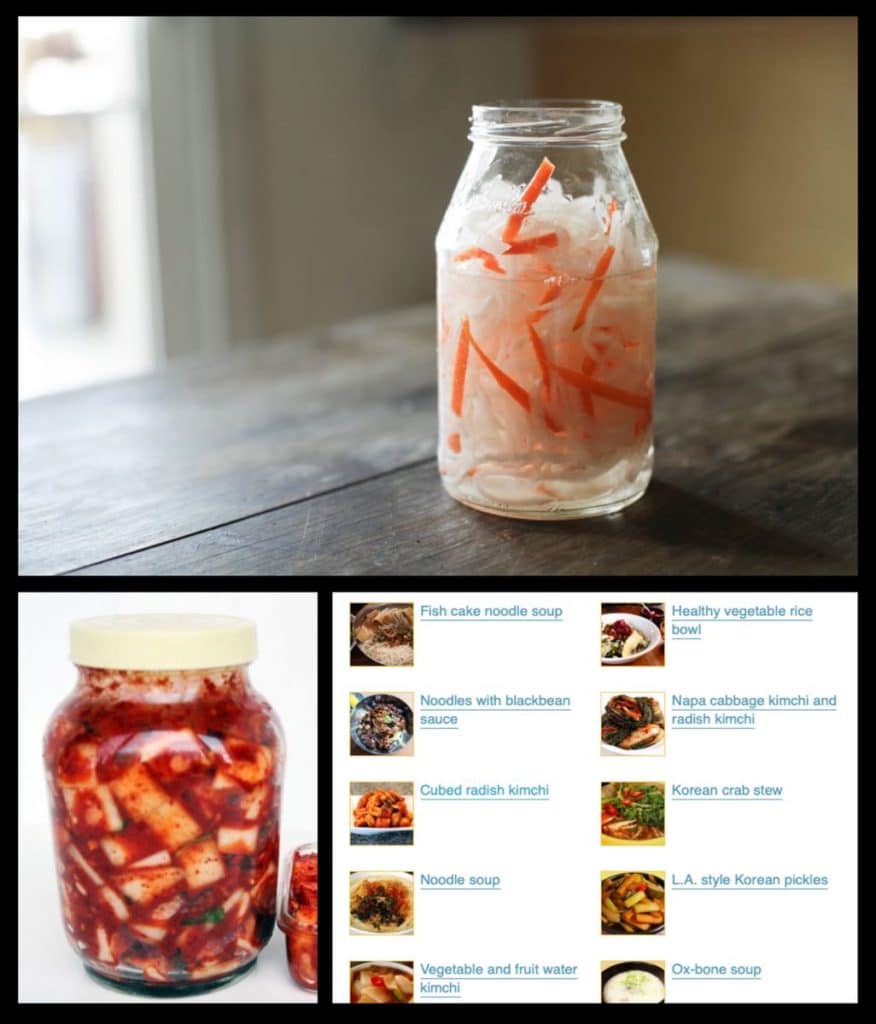
Clockwise from top; Vietnamese Pickled Carrots & Daikon Radish Recipe (Đồ Chua, photo credit Hungry Huy); the Maangchi.com website has so many recipes for Korean daikon including Radish Kimchi (photo credit Maangchi).
Vietnamese Pickled Carrots & Daikon Radish Recipe (Đồ Chua)
From Hungy Huy.
This is my go-to recipe for mixed daikon-carrot salad. The recipe calls for a light fermentation but it’s good after an hour in the fridge. This pickled carrot-daikon salad is used to top bahn mi sandwiches and in other Vietnamese dishes. Huy offers a nice discussion of how this pickle evolved as his family emigrated to the US. He lists these other recipes that the pickles can be used with:
Vietnamese sandwiches (bánh mì), savory crepes (bánh xèo), grilled pork and noodles (bún thịt nướng), egg rolls (chả gìo), and the list goes on. Larger cuts are usually found next to cuts of meat, while finer shreds are put in nước chấm (dipping sauce).
Maangchi rules for radish ideas!
Head to Maangchi for dozens of radish recipes. She has the best website for Korean recipes. Her Radish Kimchi recipe is close to foolproof and easy to scale.
The Oriental Food Mart on Park Street in Madison is a Korean grocery that stocks Korean hot pepper flakes called for in many of her recipes. Ask the owner for help picking out your pepper flakes – he is super helpful. I keep a bag of medium heat in our freezer and use them in everything for flavor without excessive heat.
Week #4. Final box of June Share.
- On: June 26, 2024
 0
0
This delivery wraps up our June Share.
We hope you enjoyed our experimental 4-week June Share. We think it went quite well. I like that we were able to include most everyone’s spring favorites. At this point, let’s assume we will do this again next year. Watch for emails over the winter.
What’s next?
Our next farm offering will be organic plum (Roma) tomatoes, for sauce, freezing or canning. The tomatoes are often ready around the Labor Day weekend.
– We plan to host on-farm u-picks so you can come harvest ripe plum tomatoes.
– We might offer pre-picked plum tomatoes for sale as well.
I’ll send emails to all of June Share members plus everyone on our email list.
I might offer a pop-up sale in fall, something similar to a CSA box or a smaller version of our Storage Share from other years. Just watch for emails from me.
Willy Street Coop and Outpost Natural Foods and Basics Coop will stock our produce through the summer, fall and winter. Next week, we begin planting carrots for those 5 lb bags to deliver all winter! Now we just need a dry spell to get the carrot seeds in the ground.
Strawberry Wrap-Up

There were a lot of berries ready to pick!
Our berry season came to a dramatic end during the u-pick on Saturday. People came at 9:00am, hustled and hurried home with lots of berries. The picking was good until the downpour. But you all are tough and everyone was in a good mood once the rain stopped again. However, the heavy rain on Saturday … and Saturday night … and Monday night have damaged the berries. Our berry season is finished. We hoped to pick for this week’s delivery but the berries are gone. Instead, we put that picking time into sugar snap peas and have an astonishing 1.75 lb for each box! I do not think we’ve ever delivered that many peas at once.
Thank you all so much for joining our June Share this year. We are honored by the trust you have in us. Please enjoy this last delivery.
Beth & Steve
Veggie List & Veggie Notes
Week #4, June 27, 2024
– Weekly shares
– BiWeekly/ B group
Sugar snap peas, ~1.75 lb
Napa cabbage
Zucchini &/or summer squash, ~3 lb
Cucumbers, ~3
Silver Slicer cucumber, 1 or 2
Kohlrabi, 1 or 2
Scallions, 1 bunch
Basil, 1 sprig
Rhubarb, 1.25 lb
Sugar snap peas. These peas should be eaten pod and all. They are delicious raw, or very lightly cooked or stir-fried.
Preparation: They will need a quick rinse to remove faded gray blossoms. Here’s how to remove the strings on each pod. Snap off the stem end and pull the string down the concave side of the pod (the inward-curing side). Throw away the string and eat the pod. The thicker pea pods will usually have a string along both edges. Remove them when you snap off the stem.
Storage: Refrigerate.
Napa cabbage (large, pale green cabbage with crinkled leaves) – Napa cabbage is an interesting vegetable, useful for both fresh, raw salads and for cooking. Its most famous use is fermented kimchi. I like to prepare a fresh, unfermented kimchi. Same seasonings, but it’s ready to eat right away. You will be amazed at how much shredded napa cabbage shrinks when prepared this way. See here for an example, but cut the salt in half (or even further): Grilled Flank Steak with Kimchi-style Coleslaw.
Storage: Napa stores very well. When refrigerated, it will keep for several weeks. Peel off the outer layer and it will be ready to use. Here are a few preparation ideas from the ‘Asparagus to Zucchini’ cookbook.
– Chop raw napa into green salads.
– Substitute napa in traditional coleslaw.
– Chinese cabbage cooks quickly. Steam 3-5 minutes, or until leaves are wilted down but remain slightly crisp.
– Substitute napa cabbage for common cabbage in recipes, but reduce the cooking time by 2 minutes.
– Napa cabbage is the main ingredient in egg rolls. Try making an egg roll mixture to eat as a cooked side dish instead of preparing time-consuming egg rolls.
Zucchini & summer squash – Zucchini and summer squash need refrigeration but do not do well at very cold temperatures, as they will soften and form pits in their surface. Refrigerate these squash but in the warmest part of your fridge.
Cucumbers – We have been waiting for these! You’ll receive green slicing cukes or a white variety called Silver Slicer. These smaller cucumbers are thin-skinned, like pickling cucumbers, with delicious flavor. No need to peel the Sliver Slicers. For that matter, there’s no need to peel the green cucumbers either, unless you receive an unusually large one.
Storage: Store at room temperature for a few days or refrigerate in the warmest part of your fridge. Cucumbers get chilling injury if stored too cold.
Kohlrabi (pale green, round vegetable with thick skin and attached leaves) – Crunchy and sweet, kohlrabi is a great addition to salads.
Storage: Kohlrabi bulbs will store for a month in the refrigerator. Remove the leaves if you plan to store for more than a few days.
Uses: Kohlrabi are good peeled and eaten out of hand, or added to sandwiches, or added to salads. It makes a nice salad on it’s own. You can grate it, slice it, or cut it into matchsticks. It’s also good cooked.
Basil – The basil is very tender so we washed them very gently. Expect to wash again to remove grit. For this harvest, we cut entire plants. It is lovely stuff.
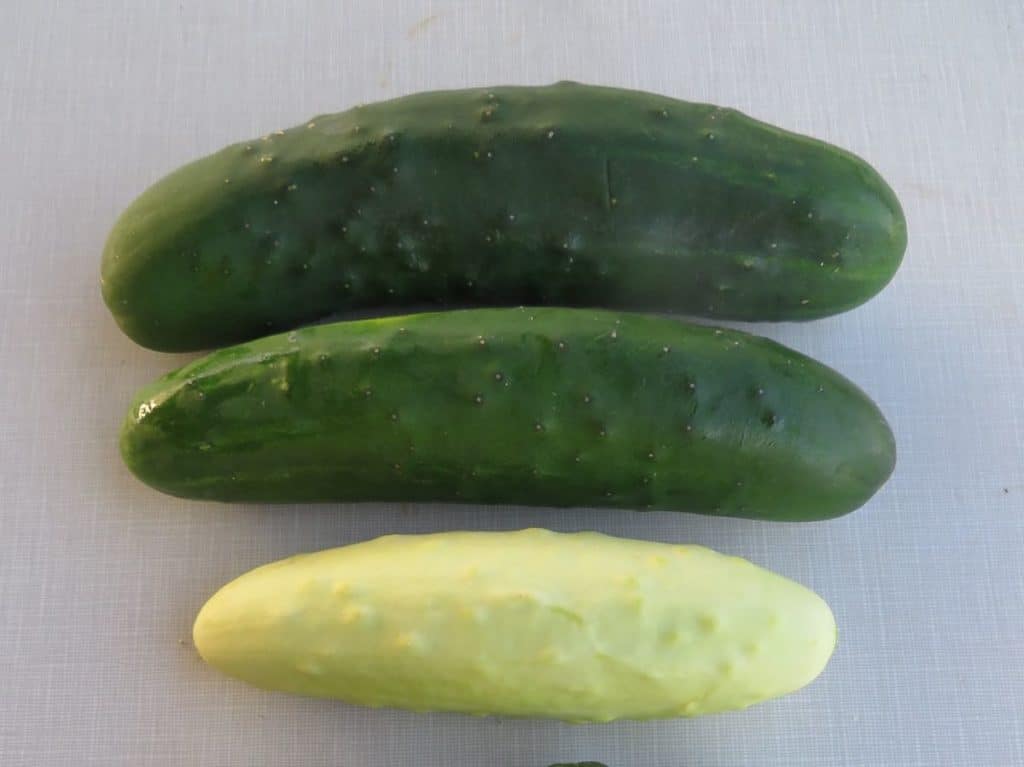
Green slicing cucumbers and a Silver Slicer cucumber.
RECIPES by DEB

Photo credit Christopher Testani
Spicy Skillet Ground Turkey and Snap Peas
From the New York Times
Combine the sugar snaps and scallions in this week’s box with ground turkey to make this spicy stirfry, and you can add more fresh basil if you don’t have mint – or simply omit the mint.
.
.

Photo credit Sidewalk Shoes
Pasta Primavera with Shrimp and Sugar Snap Peas
From Sidewalk Shoes
In addition to sugar snap peas, scallions, and the basil that you will find in this week’s box, this recipe also calls for fresh parsley and arugula. But Primavera recipes are forgiving in terms of what veggies you use, so you can sub in what you have and certainly amping up the amount of sugar snaps will work just fine. The images in the post show snow peas rather than sugar snaps, but they’re pretty interchangeable too! And 3 cups of dry penne (or other pasta) is about 12 oz. or 3/4 of a pound.
.
.

Photo credit Leah Maroney
Pickled Kohlrabi
From The Spruce Eats
These kohlrabi pickles will keep in the back of the fridge for a long time and can be served as a condiment with hamburgers or brats, or any other sandwiches. The recipe also suggests chopping them up for coleslaw and adding some of the brine to the dressing, or serving them as a garnish in your martini!
.
.

Photo credit Kellie Hatcher
Crunchy Napa Slaw
From Mountain Mama Cooks
This crunchy slaw will put a good dent in the Napa cabbage in this week’s box, and also calls for sugar snaps and scallions. You can sub in the basil for cilantro and julienned or grated kohlrabi could stand in for carrots.
.
.

Photo credit Molly Yeh
Magic Sesame Sauce
From Molly Yeh, My Name Is Yeh (“yay”)
This week’s box contents, and the weather, suggest cold spicy noodle salads. If you’re like me, you’ve tried a ton of cold peanut and/or sesame noodle recipes – and there are plenty of them out there online! – but this simple sauce from food blogger and TV cooking show personality Molly Yeh is really simple and dependable. You can make it with either tahini or peanut butter and it’s enough sauce for 8 ounces of noodles. It can also easily be doubled, and can be topped with torn fresh basil, scallions, zoodle-ized zucchini, or thinly sliced cucumbers, as just a few possibilities.
.
.

Photo credit Justine Doiron
Zucchini Muffins with Cinnamon Chocolate
From Justine Snacks
Zucchini season has come early this year, and this muffin recipe deserves a try. It has just enough chocolate and it’s not too sweet, and the muffins keep well and seem to actually taste better after a few days. The recipe is written for 6 jumbo muffins, and does provide measurements for making regular size. I made regular size muffins and got 13, and didn’t have any of the cinnamon chocolate left for the topping, so if topping is important to you, made some extra!
.
.
A couple of go-to recipes for 3+ pounds of zucchini
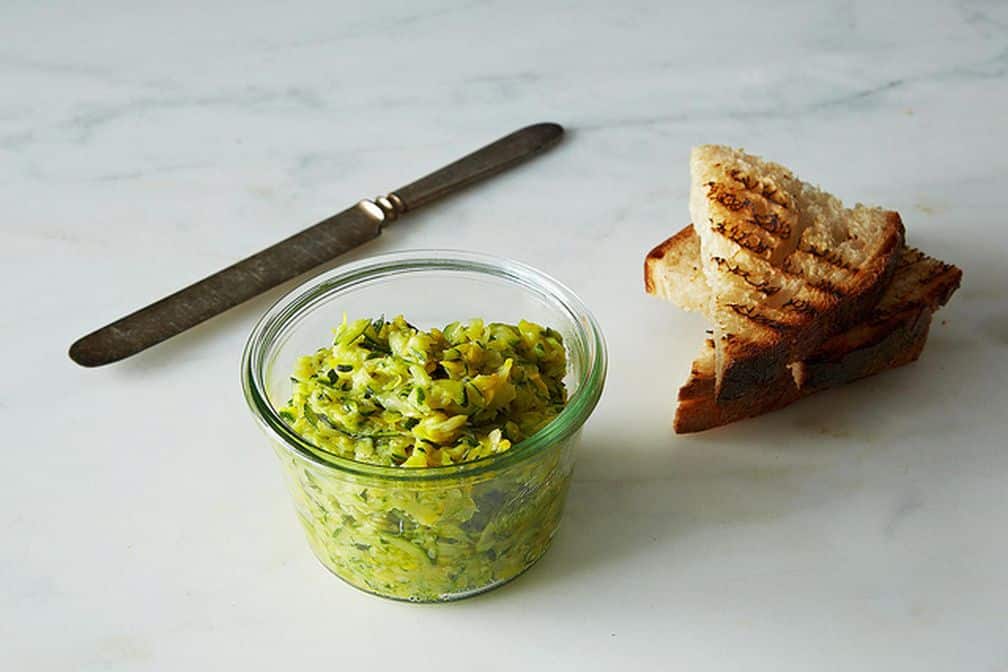
Photo credit James Ransom Food52
Best Zucchini Butter Recipe – How to Make Jennie Cook’s Zucchini Butter
From Food52
There are quite a few versions of zucchini butter out there and it is sometimes attributed to Julia Child. Wherever the recipe came from it’s a versatile way to preserve zucchini. I don’t even drain and squeeze the grated zucchini, because the extra juice will reduce in cooking and make the butter more flavorful. Zucchini butter can be made dairy free, and is great in eggs, on toast, and can be frozen. Many people’s favorite way to use it is in smitten kitchen’s zucchini butter spaghetti.
.
.

Photo credit RecipeTin Eats
Zucchini Tian
From RecipeTin Eats
Here’s a nicely laid out version of a classic Julia Child recipe, Tian de Courgettes au Riz (Zucchini Tian). This is another recipe with many versions online, for example smitten kitchen or DebsLunch, but I find this one from RecipeTin Eats easy to follow.
Week #3. Farm News.
- On: June 19, 2024
 0
0

We have two boxes of strawberries for everyone this week.
Farm news
Wow, that was a burst of heat and wind this week. Most of our crops love the heat. It’s striking how much the zucchini plants grew. We were surprised to have zucchini in your June 13 boxes, just as we were surprised to have strawberries for you on June 6. It was an early spring but now crops are settling into their usual schedules.
There was a three-week rainy spell in May and June, totalling 7.5 inches here at our farm. That is as much rain as we got last year in all of April, May, June, July, August and September combined. What a striking difference. Seven and half inches is a lot for three weeks. Less than 7.5 inches in six months is extraordinary. So we are not complaining about rain this year.
Strawberries dominate our life right now. The four u-picks we hosted have been fun but time-consuming. We spend a lot of time in the fields judging which varieties are ready to pick, then strategizing harvests and u-picks.
We are thrilled to have two pounds for you this week. The crew groaned when they learned that we needed 94 pails of berries but then I showed them the field section ready for harvest. It was great picking.
Final berry u-pick?
Saturday June 22. Reservations required.
This is probably our last berry u-pick of the season. I will post the reservation link here in this blog and here once I am ready to open reservations to the public. Tipi CSA members, I sent you the June 22 link via email, earlier today.
Thanks,
Beth
Farm photos

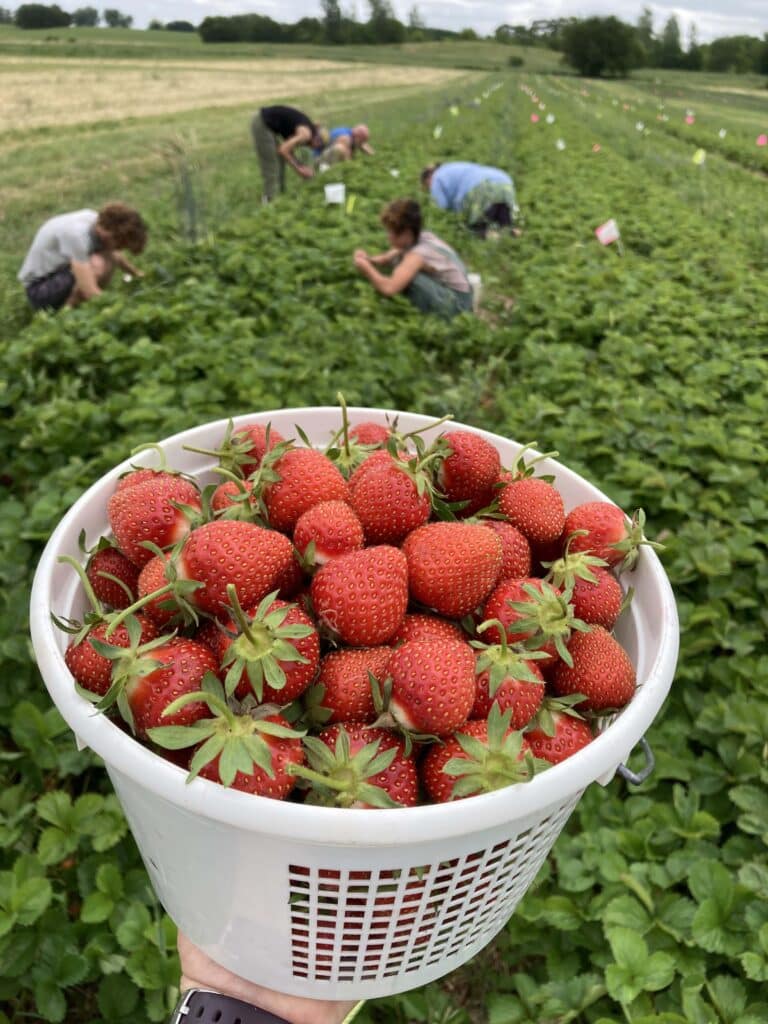
It takes a team to pick your berries. From left at top, Ari, Maggie, Aly, Ben, Ava and Madelline. Not in photo, Simone and me.

How’s that for a pretty field? Three beds of zucchini and Zephyr summer squash, plus two beds cucumbers at left. These will be harvested for next week’s CSA box, then for Willy Street Coop and Outpost Natural Foods Coops.
Veggie List & Veggie Notes
Week #3, June 20, 2024
– Weekly shares
– BiWeekly/ A group
Strawberries, 2 lb
Lacinato kale
Zucchini &/or summer squash, ~3lb
Fennel, 1 bulb with fronds
Red bibb lettuce
White salad turnips (just roots, no tops)
Scallions
Garlic scapes, a handful
Next week’s box will probably contain snap peas, napa cabbage, zucchini, scallions, basil and more.
Strawberries – The berries are coming on strong! As usual, they are perishable so refrigerate and enjoy soon.
Lacinato kale (bundle of grey-green textured leaves) – This is our most beautiful cooking green and a super food! Use like any kale.
Storage: Cover and refrigerate.
Zucchini & summer squash – The plants love heat and have really taken off.
Storage: Zucchini and summer squash need refrigeration but do not do well at very cold temperatures, as they will soften and form pits in their surface. Refrigerate these squash but in the warmest part of your fridge.
Fennel (bulbs and lacy fronds) – Fennel is a ‘swing vegetable’; it can be used raw or cooked. Clean well and slice as thinly as possible for use in raw salads. It is good simply prepared with olive oil, lime or lemon juice, salt and shaved parmesan cheese. Cooking softens and sweetens fennel, and mellows its anise flavor. Both the bulb and leaves are edible. Here are ideas from Alice Waters of Chez Panisse about how to use fennel: ‘It’s strong anise characteristic seems to suit fish particularly well. … We use fennel all the time. We add the feathery leaves to marinades for fish and to numerous salads, sauces and soups and we use them as a garnish, too. … The bulbs are sliced and served raw in salads in various combinations with other vegetables, parboiled for pastas; caramelized and served as a side dish; braised whole; or cooked in vegetable broths & fish stocks.”
White salad turnips – We are sending just the white roots this time. The tops had too much insect damage so we cut them off.
Scallions (bundle of green onions) – These are useful raw or cooked. Thinly-sliced raw scallions can be folded into biscuit dough or sprinkled on top of soups or salads. Terrific garnish for pasta dishes. Think pad thai.
Garlic scapes (curly green things) – Garlic scapes grow at the top of garlic plants. We snap off the young scapes to direct the plants’ energy into forming garlic bulbs underground. Use scapes as a substitute for garlic cloves. They can be minced, mixed with olive oil, and added to stir fries or simple pasta dishes. The scapes can be sautéed, but will not brown like garlic cloves. Expect them to retain their crunch even when cooked, and to be milder than garlic cloves, closer in pungency to the green garlic we’ve sent.
RECIPES by DEB
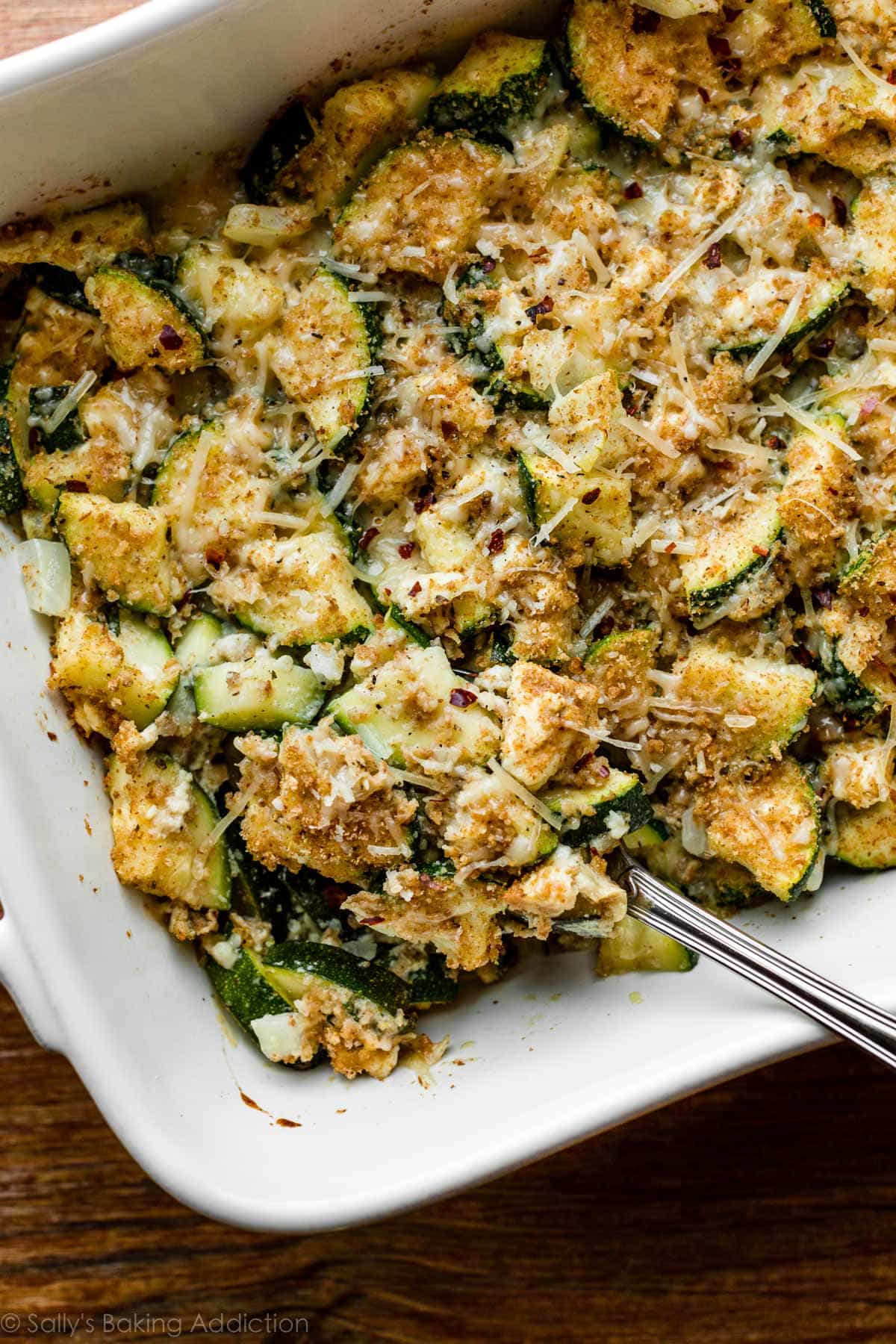
Photo credit: Sally’s Baking Addiction.
Zucchini Casserole
From Sally’s Baking Addiction
I’ve tended to turn to the Sally’s Baking Addiction website for sweet baked good, but here’s a savory, substantial recipe for zucchini, and of course once you’re at the site, you can follow links to sweet zucchini muffins and bread, etc. You can use either fresh or dried herbs in the casserole.
.
.
Photo credit: Lucy Schaeffer; Food Styling Debbie Wee
Strawberry Icebox Cake Recipe
From The Kitchn
Here’s a fun no-bake dessert for these hot days. The recipe calls for 2 pounds of strawberries, but if you’d like to reserve some of this week’s strawberry haul for plain eating, I tested it as a half-batch in an 8×8 pan. You’ll only need one pound of strawberries and 1 3/4 cups heavy cream. I left off the chocolate, too.
.
.
Here are two options for fennel salads: the first is mainly fennel, the 2nd includes zucchini and greens.
Fennel Salad
From RecipeTin Eats
This shaved fennel salad is, as the author says, quick and easy to make if you have a mandolin. If you don’t, a sharp knife will do it, or the slicing blade of a food processor. There are only 5 ingredients in this salad, fennel, lemon, olive oil, onion, and Parmesan. If you’d like a salad with less focus on the fennel, see the next recipe.
.
.
 Photo by Heidi Swanson
Photo by Heidi Swanson
Shaved Fennel Salad
From 101 Cookbooks
This fennel salad is from a cookbook titled Super Natural Everyday and made available online at 101 Cookbooks by the author, Heidi Swanson, and it was also in a late June newsletter from last year. It features fennel and zucchini, two of the vegetables we have in this week’s boxes, and is served over arugula, but you can certainly sub the Red Bibb lettuce instead.
.
.
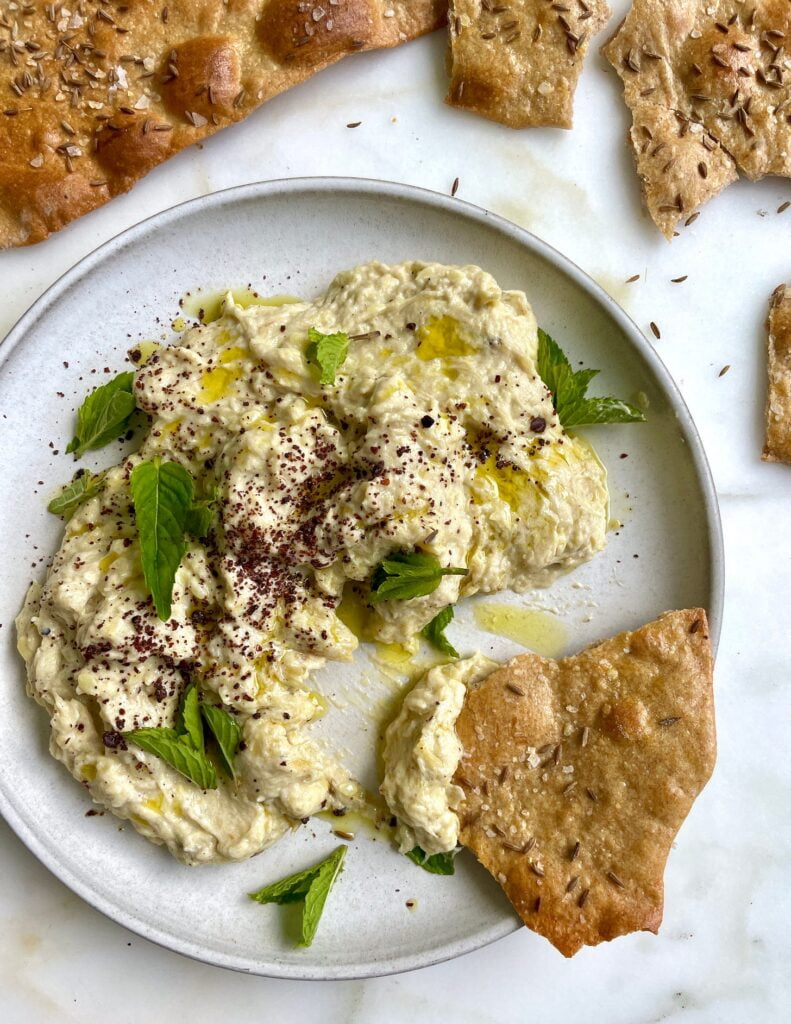
Photo by Susanality
Zucchini Baba Ganoush
By Susan Spungen, From Susanality
This recipe uses zucchini in place of eggplant to make Baba Ganoush, an idea that’s new to me, but looks like a great way to use up an abundance of zucchini. The recipe provides suggestions for charring the zucchini using a gas grill, your oven’s broiler, or charcoal, especially if you’re grilling something else.
.
.
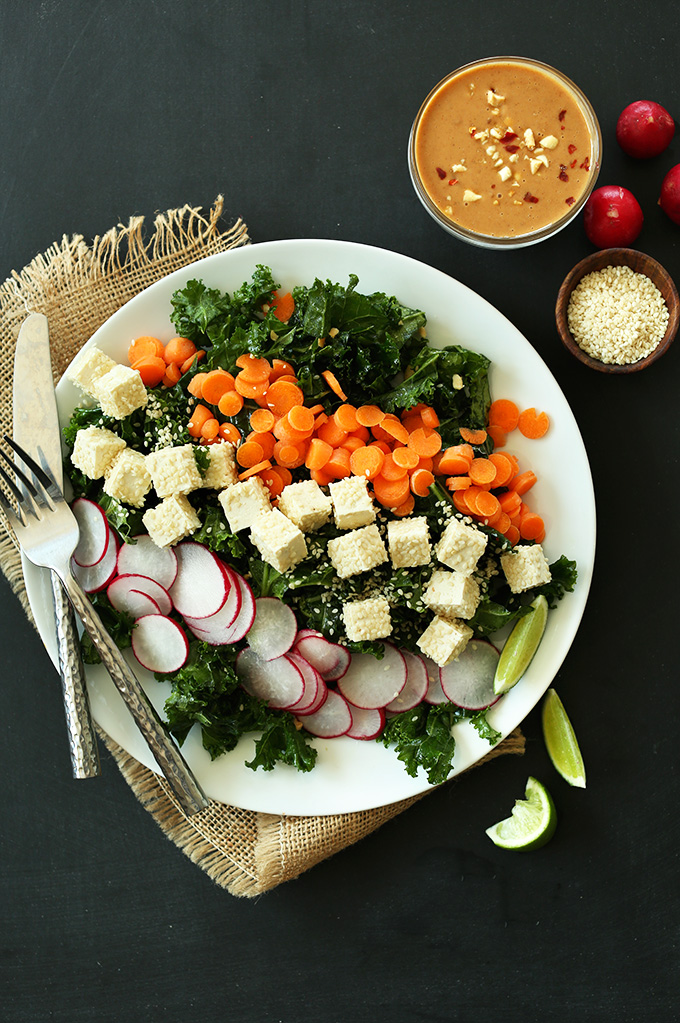
Photo credit: Minimalist Baker
Thai Kale Salad
From Minimalist Baker
Lacinto kale is great in salads since it’s usually more tender than other varieties, and this recipe gives it a nice twist with a Thai style peanut dressing. The salad is topped with raw tofu that’s been tossed in sesame seeds, and provides instructions for roasting the tofu if you prefer your tofu cooked. Thinly sliced salad turnips would be a good substitution for the carrots and radishes in the salad. And if you’d rather prepare the kale as a Caesar salad, the tahini Caesar salad dressing in last week’s newsletter would work great on kale.
.
.
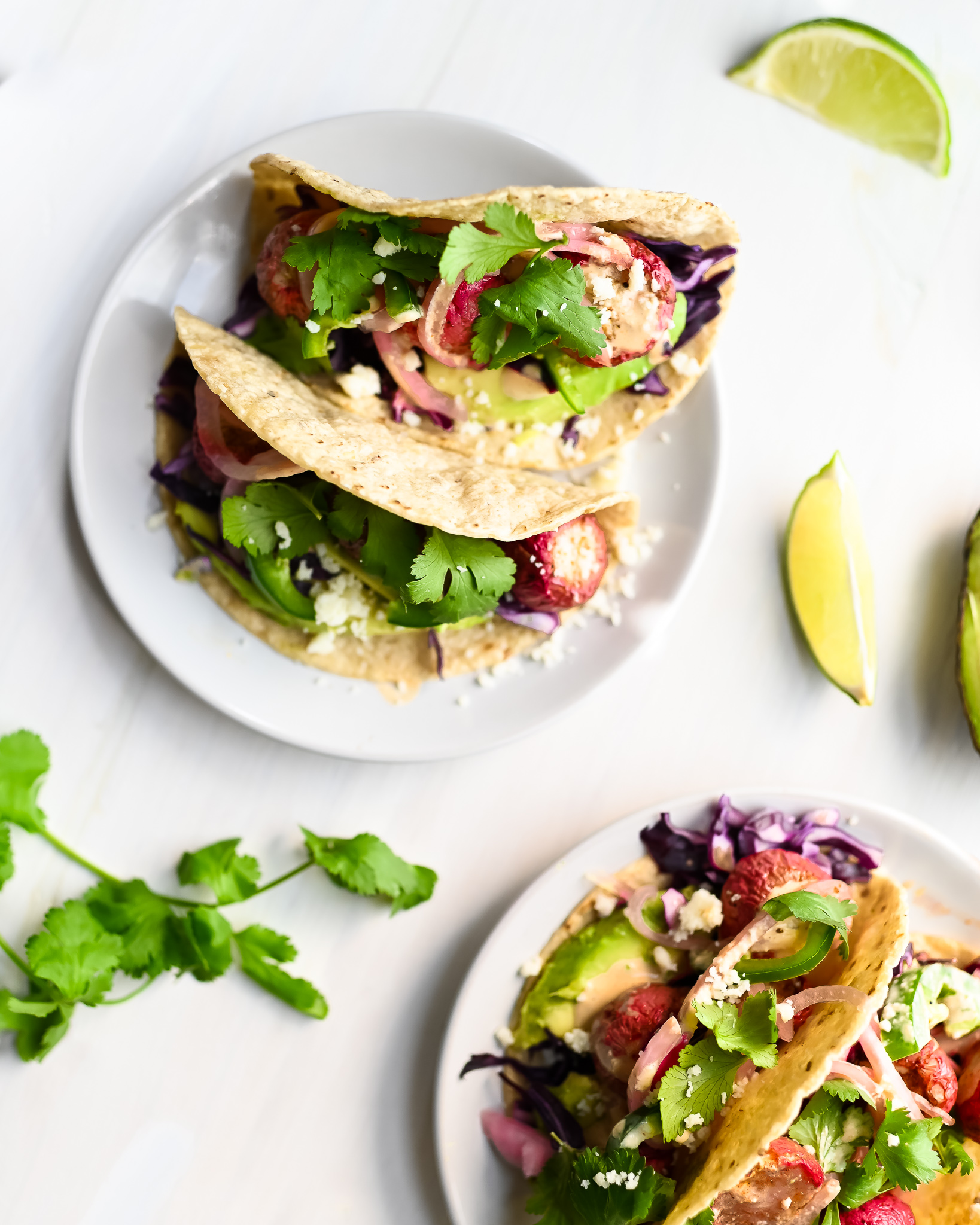
Photo credit: The New New England
Roasted Radish Tacos with Spicy Lime Sauce
From The New New England
OK, you might be wondering why a recipe for radish tacos is included this week, and it’s because the basic principle of the recipe is to roast early summer vegetables and use them for taco filling, and there are a couple of ways to sub in the veggies we have in this week’s box. One method would be to roast chunked salad turnips in place of the radishes (they’re similar in water content) and proceed with the recipe. Another method would be to roast zucchini cubes in place of the radishes and shred salad turnips to top your tacos in place of the cabbage called for in the recipe. The recipe also strongly recommends a brand of corn tortillas that I have never tried – they do seem to be widely available if you’d like to give them a try.
Week #2. Weekly + BW/B. Berry U-Picks.
- On: June 13, 2024
 0
0
U-Picks by reservation
The berries are doing great! We will host several berry u-picks in the next few days. Reservations are required. Tipi members, check my email for links to reserve a picking time. Everyone else, join our email list so we can send you the reservation links.
Grit, grit, grit
This week’s produce has seen a lot of rain over the last month. The Romaine and asparagus need washing to get rid of grit. See last week’s notes about how to wash your greens efficiently.
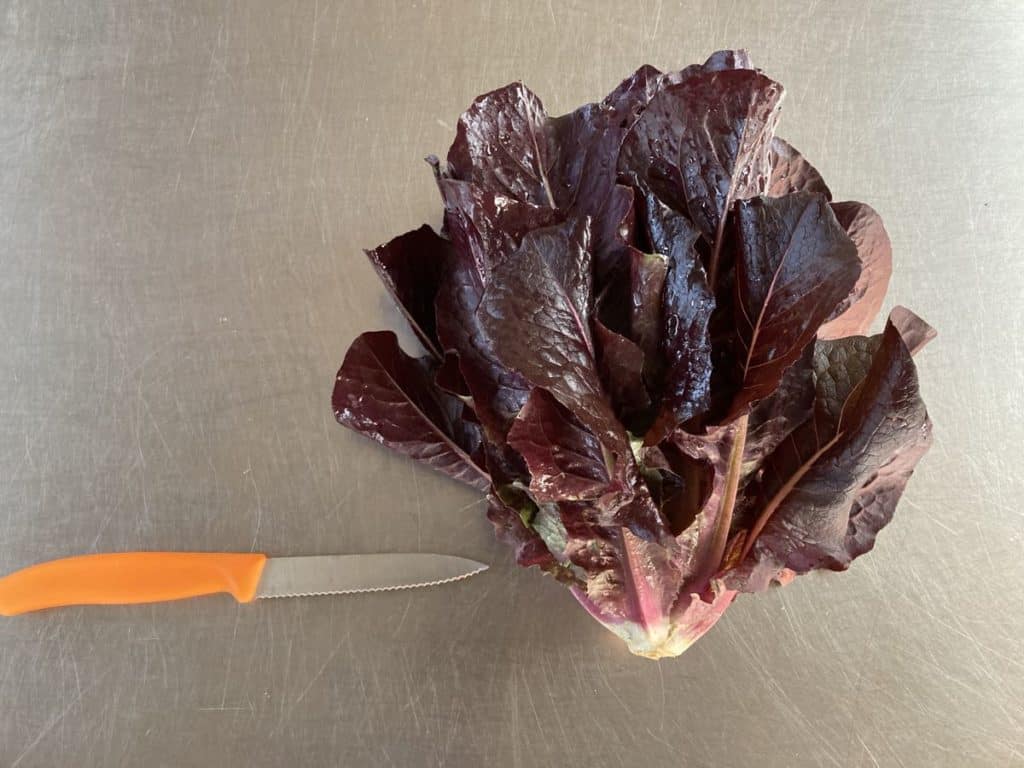
Cut your lettuce heads at one and a half inches above the base, then discard the base. In one stroke, you’ll eliminate a lot of dirt behind.
Veggie List & Veggie Notes
Week #2, June 13, 2024
– Weekly shares
– BiWeekly/ B group
Strawberries, 1 lb
Asparagus, 1.25 lb
Button mushrooms, 12 oz
Zucchini or yellow squash, 2 or 3 ct
Romaine lettuce
Spinach, 1 bunch
Mixed red & green kale, 1 bunch
White salad turnips, 1 bunch
Green garlic, 1 bunch
Next week’s box will probably contain strawberries, lettuce, white salad turnips, zucchini, cooking greens, scallions and more.
Strawberries – The berries are doing great this week, soaking up the sunshine.
Storage: Refrigerate and eat soon.
Asparagus – This is the final harvest. Enjoy!
Button mushrooms – These organic mushrooms are from Hidden Valley Mushrooms from Wisconsin Dells. We bring in mushrooms from Mary and Ed every spring because they combine so perfectly with our spring vegetables, for salads, quiches, etc.
Storage: Here are Mary’s suggestions for storing the mushrooms:
– Store separate from leafy greens, which hasten mushroom aging.
– If storing for more than a few days, remove from the box and refrigerate in a paper bag with holes punched in the side. Keep dry.
– Don’t wash to clean, just wipe with a damp cloth.
Spinach – This batch will be best cooked.
Kale – We’re sending mixed bunches of red and green leaves this time, just because they are pretty.
Storage: Cover and refrigerate.
White salad turnips (see photo) – I know that returning members look forward to these sweet and delicious turnips, which taste nothing like the turnips that are harvested in fall.
– Storage: Cover and refrigerate.
– Uses: Both the turnip roots and tops are edible. The roots are excellent raw; Slice and add to salads. They can be cooked and are especially good when lightly sauteed in butter. Stir as little as possible so they brown on at least one side. The turnips greens are excellent cooked. Treat them like mustard greens.
– Our favorite use: Slice the roots very thinly and combine with a mixture of rice vinegar, mirin, soy sauce, sesame oil. Eat immediately or marinate.
Zucchini – We have the first harvest already. This is early!
Storage: Cover and refrigerate.
RECIPES by DEB
Crunchy Celery, Radish and Turnip Salad-Slaw in Blue Cheese Sauce
From Food52
If you have radishes left from last week you could add them to this salad, or simply omit – and if you do that, you might have extra blue cheese sauce, which could be a good thing, because it would be tasty on other salads!
.
.

Tahini Caesar Salad with Olive Oil Breadcrumbs
From Familystyle Food
I love crunchy home made croutons in a salad, but recently I’ve been finding that toasty breadcrumbs are also a great way to top a salad, especially one with a creamy dressing like this. The recipe’s method of essentially making croutons first and then crumbling them to make the breadcrumbs sounds messy to me. Alternatively, you could make the crumbs first in a food processor – or purchase – and then brown the crumbs in the olive oil in a skillet. And throw a little garlic or green garlic in as the crumbs toast!
.
.

Bucatini with Sausage & Kale
From Taste of Home
This recipe is a version of a common combination for pasta: some kind of greens, sausage, and cheese. Some recipes also include heavy cream, unlike this one, making this version healthier! But if you are in a mood to indulge, you could add 1/4 to 1/2 cups cream when the sausage is browned. Bucatini is like fat, hollow spaghetti, so a different long noodle like spaghetti or linguini or fettuccine would work here, or you could also use a short pasta like penne.
.
.
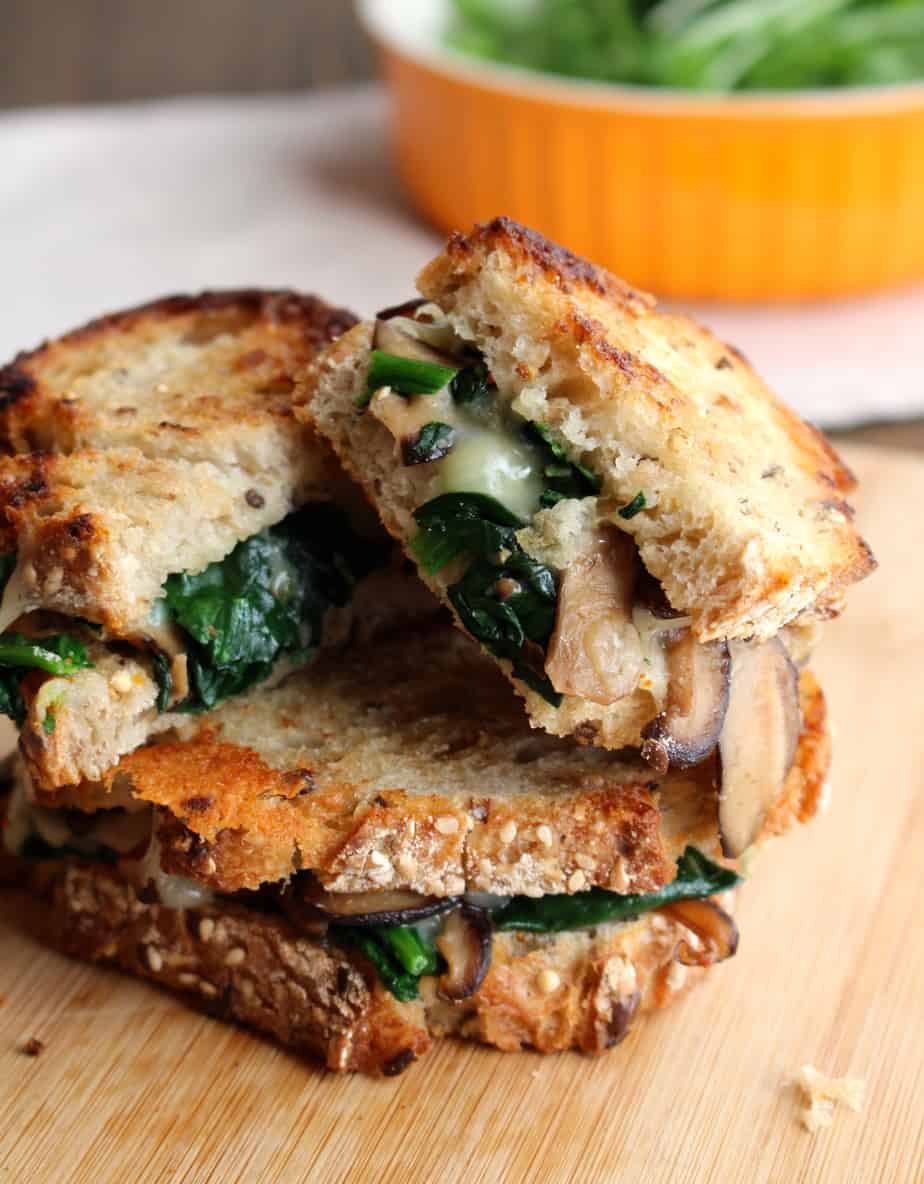
Mushroom Melt Grilled Cheese
From Frugal Nutrition
Here’s a quick and easy way to eat up the mushrooms and spinach from this week’s box, without turning on your oven. The recipe supplies a handy multiplier to help you figure amounts for up to six sandwiches.
.
.

Leafy Greens Pesto
From The Fountain Avenue Kitchen
As most CSA members most likely already know, you can make pesto with lots of other types of greens and herbs, not just basil. I’m pretty sure there’ve been recipes for kale and even broccoli pesto in prior newsletters. The nice thing about this recipe is that it provides proportions for using just about any type of greens, and there’s also a dairy-free variation.
.
.

Photo by Robby Lozano
Easy Upside Down Sheet-Pan Asparagus Tart
From Serious Eats
If you’re on Instagram, you’ve probably seen Dominic Franks’ upside down puff pastry recipes, as well as others. The topping/filling ingredients are laid on a pan, then covered with a sheet of puff pastry. This helps the toppings cook, for example in this recipe where there’s no need to precook the asparagus, and also helps the puff pastry rise and brown, then the dish is flipped for serving.
Week #1. The June Share begins.
- On: June 05, 2024
 0
0
Hello everyone!
We are back, with an action-packed box. There are unexpected strawberries in this box, the result of a mild winter and early spring. These members receive a box on June 6 (unless they rescheduled):
– Weekly Shares
– BiWeekly/ A group.
If you don’t remember your share type, log in online and look at your scheduled dates under Orders.
Strawberry u-picks.
Keep your fingers crossed – it looks like a good strawberry year. We doubled our berry field and expect to have lots of u-pick opportunities. Reservations required, as usual. I will offer reservation links to these groups, in this order below. There will probably be just a few hours separating the groups, so watch your emails.
1. 2024 Tipi CSA members – You folks get the first chance to reserve a picking time. Watch for emails with instructions to place a reservation.
2. 2022 and 2023 Tipi CSA members and our u-pick email list – This is the second group to receive offers to reserve a picking time. Watch for emails from me.
3. When there are still open reservation slots, I’ll offer them on our U-Pick berry page and on Facebook.
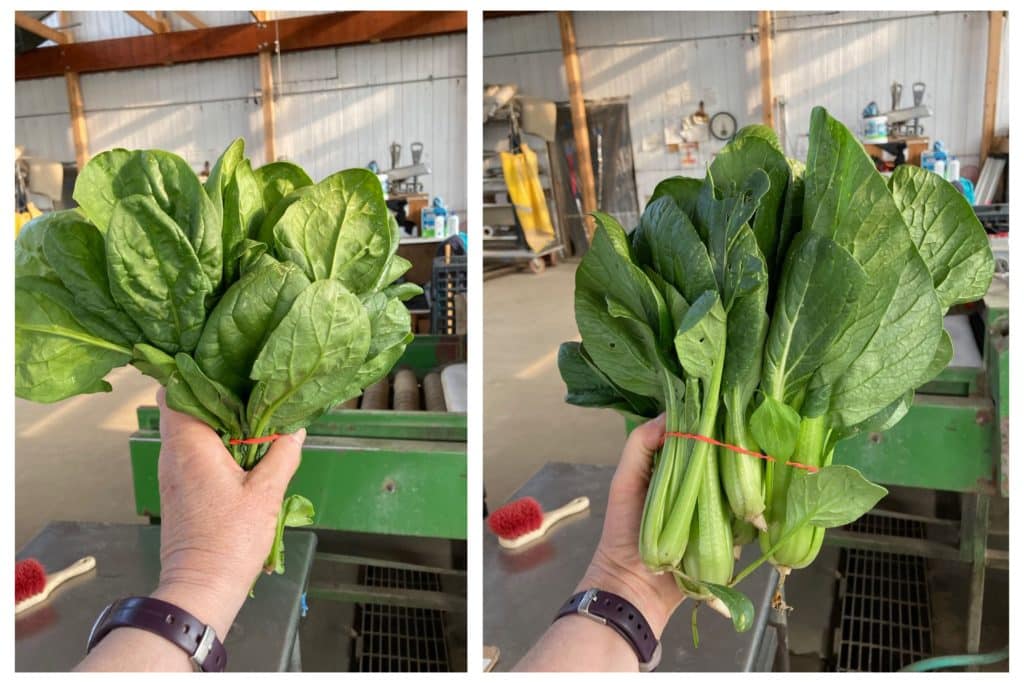
Spinach (left) and komatsuna greens (right). Both are bundled with a rubber band but you can tell them apart by the stems. The komatsuna stems are thicker and resemble bok choy stems, which they are related to.
There will be grit in your produce this week, a side effect of recent rain. We appreciate the rain, but those were intense downpours!
Thoughts:
– Cut your lettuce one and a half inches above the base and you’ll leave a lot of dirt behind.
– Expect to spend extra time cleaning this week’s greens. Let’s talk about how to do that efficiently.

Cut your lettuce heads at one and a half inches above the base and you’ll leave a lot of dirt behind.
How to wash greens efficiently and to maximize storage life
Washing and drying your lettuce, spinach, and other greens prolongs their storage life. And they will be ready to use on busy weeknights! Here’s our approach. It works.
1. Fill your sink or a basin halfway with cold tap water. If you have two sinks, fill one sink partway with cold water.
2. Chop your lettuce, spinach, escarole or other green to the size you wish.
3. Dump it into the water and swish around gently but thoroughly.
4. Working in two batches (for average lettuce head) or more batches (big spinach bunches, Romaine), pull handfuls out of the water and drain in the basket of a salad spinner.
5. After all the greens have been rinsed one time, dump the water. Rinse the sink/basin and refill with cold tap water.
6. Repeat the process.
7. Spin your greens dry and store in a dry container. They store much longer when spun dry.
This works because …
– pre-chopping the greens frees soil trapped in the head.
– the large amount of water washes and dilutes away the grit.
– By pulling the greens out of the water, you take advantage of the draining action to pull the grit with it.
– Drying (spinning) the greens before storage reduces spoilage.
Veggie List & Veggie Notes
Week #1, June 6, 2024
– Weekly shares
– BiWeekly/ A group
Strawberries, 1 pint
Asparagus, 1 lb
Shiitake mushrooms, 8 oz
Red leaf lettuce
Spinach, 1 bunch
Komatsuna greens, 1 bunch
Salad radishes, 1 bunch
Cilantro, 1 bunch
Green garlic, 1 bunch
Rhubarb, ~1.5 lb
Next week’s box will probably contain strawberries, mushrooms, spinach, lettuce, green garlic, tender cooking greens and more.
Strawberries – Eat soon. This week’s berries look a little rough but are tasty. They survived many recent storms. We are lucky to get those storms out of the way early in the berry season. We have good weather ahead and the younger berries will be in good shape for the u-picks.
Storage: Refrigerate.
Asparagus – This is my favorite spring treat!
Prep: Wash your asparagus thoroughly to remove hidden grit. Submerge in water with the tips pointing down, soak briefly, then swish vigorously and pull out of the water. The draining action helps pull the grit out of the asparagus tips. Repeat several times.
Storage: Asparagus is perishable, so eat it as soon as possible. Store in a paper towel, cloth or paper bag, then wrap loosely in a plastic bag. The paper bag protects the asparagus tips from direct contact with the plastic bag. The plastic bag keeps the asparagus from wilting.
Preparation: We snap our asparagus at harvest, rather than cutting. Therefore, there is no need to snap the stalks to remove fibrous ends. For the same reason, it is not necessary to peel the asparagus stalks. It’s OK to trim the cut end a bit.
Cooking: If your asparagus stalks vary greatly in size, you will want to cook the thicker ones longer. Put an empty steamer pot over water, and bring the water to a boil. Add the asparagus. Cover and steam over medium heat until just tender. Use two forks or a spatula to turn the asparagus during cooking, rotating the bottom spears to the top. Drain and serve. Alternatively, you can lay spears flat in the bottom of a broad pan, with ½ inch of water. Also excellent broiled or grilled. Good dressed with vinaigrette, or with lime juice, salt and pepper.
Shiitake mushrooms – These are from Hidden Valley Mushrooms, the same people who grow button mushrooms for us. I love shiitakes cooked with spinach or other greens. Shiitakes must be cooked. A small subset of people can have a toxic reaction to raw or undercooked shiitakes. Once cooked, they are harmless. And tasty! Lightly sauté in butter and add to any dish. We use ours in frittatas, as well as sautéed and mixed into pasta salad or any dish. Sautéed shiitakes and spinach are a great topping for pizza or rice bowls, e.g. bibimbap.
Storage, general: Refrigerate in a dry paper bag, but not in your crisper drawer with other vegetables, especially brassicas. It’s OK to put a loose plastic bag over the paper bag but don’t close. Mushrooms are perishable so use soon.
Lettuce – The lettuce very tender so handle gently.
Storage: Refrigerate in a bag or other container.
Spinach – This spinach is OK for salads but probably better cooked.
Storage: Refrigerate in a bag or other container.
Komatsuna greens (bundle of dark green leafy heads. See photo) – This is our favorite spring cooking green. They are similar to mustard greens but with great flavor and are more mild than mustard greens. We’ve enjoyed learning to grow them over the past few seasons.
Preparation: Use in any recipe that calls for mustard greens or bok choy. Use both leaves and stems.
Storage: Cover and refrigerate.
Salad radishes – These are so good right now; tender, crisp and not too spicy. They are great in salads or thinly sliced on sandwiches. A few years ago, I was served open-faced radish and butter sandwiches on toast and was impressed with how tasty they were. Use good quality butter.
Storage: Cover and refrigerate.
Cilantro (small bunch, fragrant leaves) – Used in both Mexican and some Asian cuisines. Good to season stir-fries, salad dressing, salsa, etc.
Storage: Cover and refrigerate.
Green garlic (looks like scallions, tastes like garlic) – Last fall, we planted garlic cloves that grew into the stalks we harvested this week. If left to grow until mid-summer, the slim white bulb on this week’s garlic will divide and form the usual cluster of cloves in a garlic bulb.
Preparation: Green garlic is more pungent than scallions, so slice thinly and use sparingly when raw. It mellows when cooked. Chop and add to any cooked dish that would benefit from garlic. Use the white bulbs and pale green stems. Avoid the dark green stems and leaves, as these are fibrous.
Rhubarb – Storage: Refrigerate in a plastic bag. FYI, 1.75 lb of rhubarb yields 5 – 5.5 cups when chopped.
Stewed rhubarb: This is the simplest way to prepare rhubarb. Chop rhubarb into one inch chunks. Stir over medium heat with a small amount of water in the bottom of the pan. The rhubarb will release moisture as it cooks. Stew until it softens and falls apart. Sweeten to taste with honey or sugar. Eat warm on its own, over vanilla ice cream, on pancakes, etc.
Storage: Refrigerate.
Preserve: Rhubarb is extremely easy to freeze. Wash, chop and pop it in a freezer bag. That’s it; no need for blanching. When baking muffins or cakes, add the frozen rhubarb directly to the batter.
RECIPES by DEB
Spanakopita Spirals with Flaky Phyllo Dough
From Well Seasoned Studio
Rolling the phyllo and filling into cigars and then spiraling them is a fun alternative to the more traditional layered spinach cheese pie. You can bake the rolls in a heat-proof skillet as shown here, or I recommend a 9 x 13 metal pan, lined with parchment. If there’s not quite enough spinach in the box, sub in a few leaves of the Komatsuna. And a little green garlic to season in place of the fresh oregano would also be nice.
.
.

Radish Salsa
From The Live-In Kitchen
Here’s a quick, fresh salsa using the radishes and cilantro in this week’s box. You can sub some green garlic for the clove of garlic called for, and if you don’t have a fresh jalapeño, try using jarred pickled jalapeños or canned chipotle chile to add some heat to your salsa.
The following two rhubarb recipes, one savory and one sweet, each only use a small amount of rhubarb – so you can easily make both with what’s in the box!
.
.

Rhubarb Dressing (part of Rhubarb Salad with Little Gems, Hazelnuts & Parmesan recipe)
From Justine Snacks
The rhubarb dressing pictured is one component of Justine Doiron’s salad, but possibly the most versatile. Doiron’s full salad recipe calls for hazelnuts, Parmesan cheese, little gem lettuce, and strawberries. I used the blender method to make the dressing and poured it over a salad of leaf lettuce, Parmesan, and a few almonds, and I’m sure it was just as tasty.
.
.
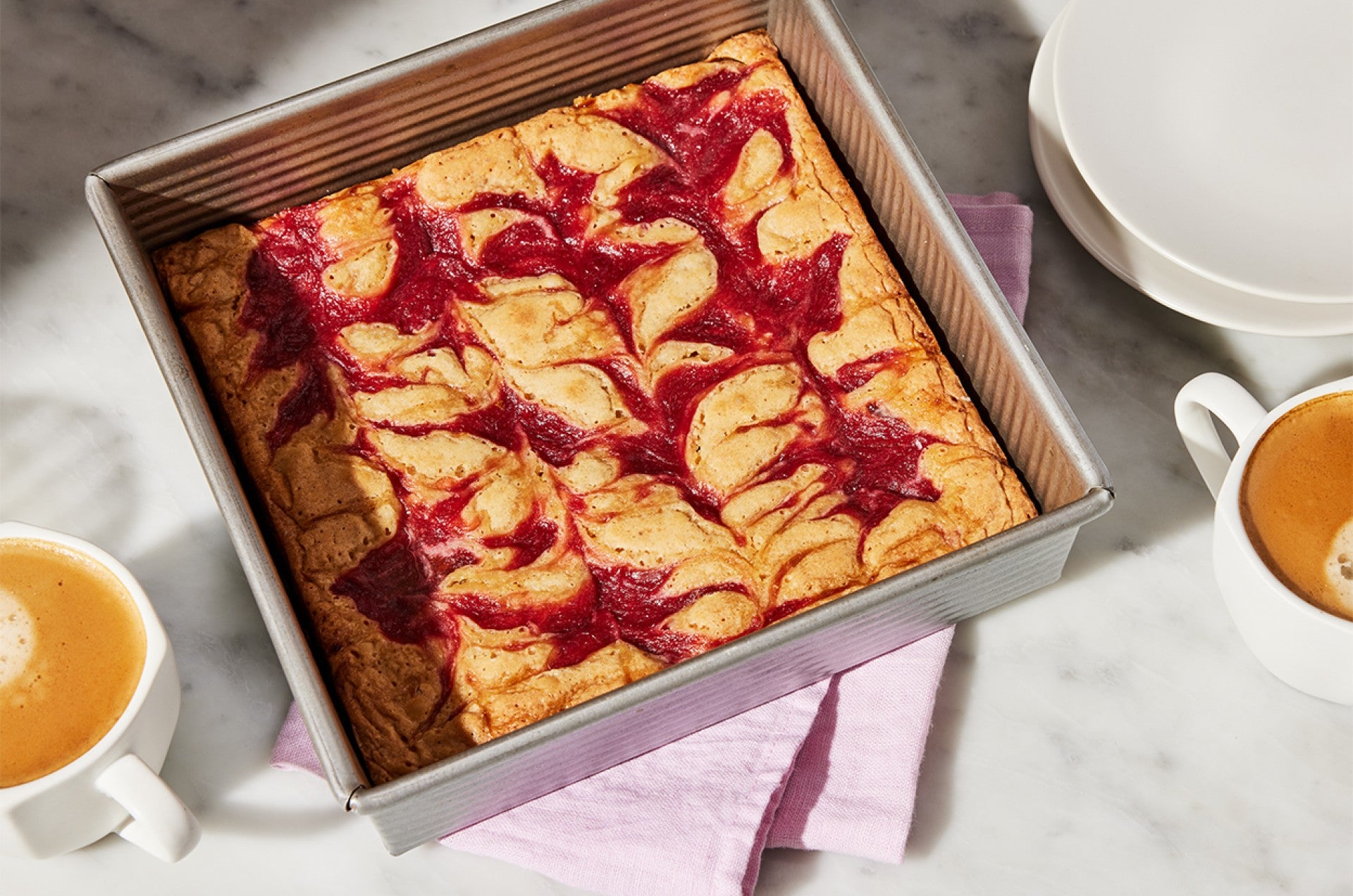
Swirled Rhubarb Bars Recipe
From King Arthur Baking
These bars are like a butterscotch brownie with tart rhubarb jam swirled in – that is, delicious. The recipe says to melt the butter in the same pot you made the rhubarb jam in, but I don’t think doing this imparts an additional essence of rhubarb into the bars, and you still end up with the same number of pots to wash!
.
.
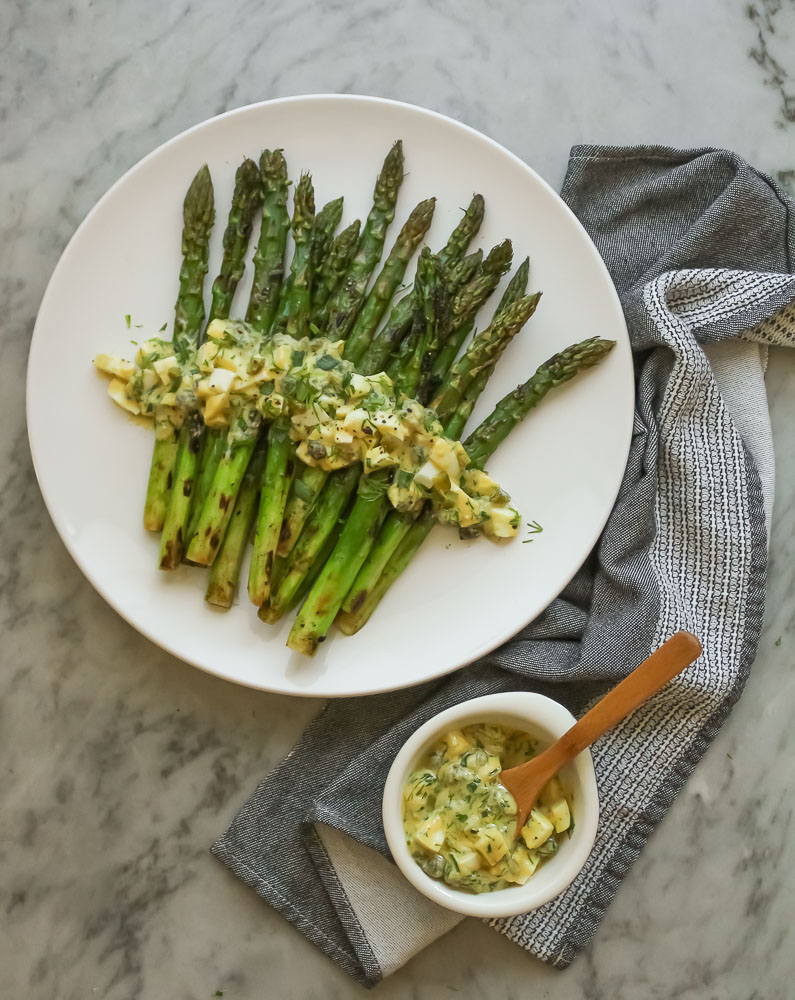
Asparagus with Sauce Gribiche
From Girl on the Range
Sauce gribiche is a traditional French sauce that compliments asparagus and just about any other green vegetable. The recipe provides instructions for grilling the asparagus but you could also roast it in the oven or even steam it before adding the sauce.
.
.
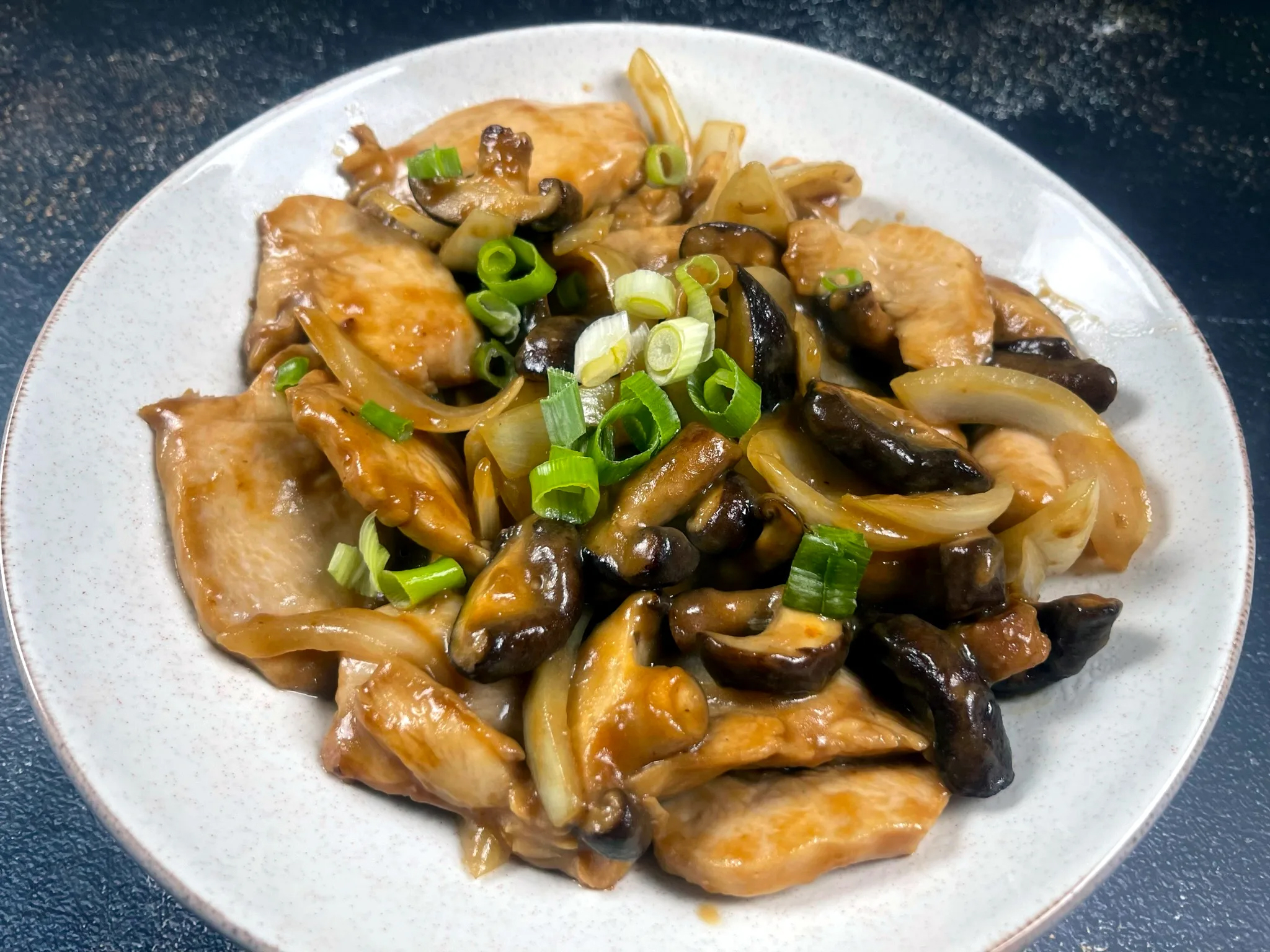
Chicken Shiitake Mushrooms Stir Fry
From Oh Snap! Let’s Eat!
This quick chicken and mushroom stir fry can be made with boneless chicken breast or thighs, or you could omit the meat and use tofu.
.
.
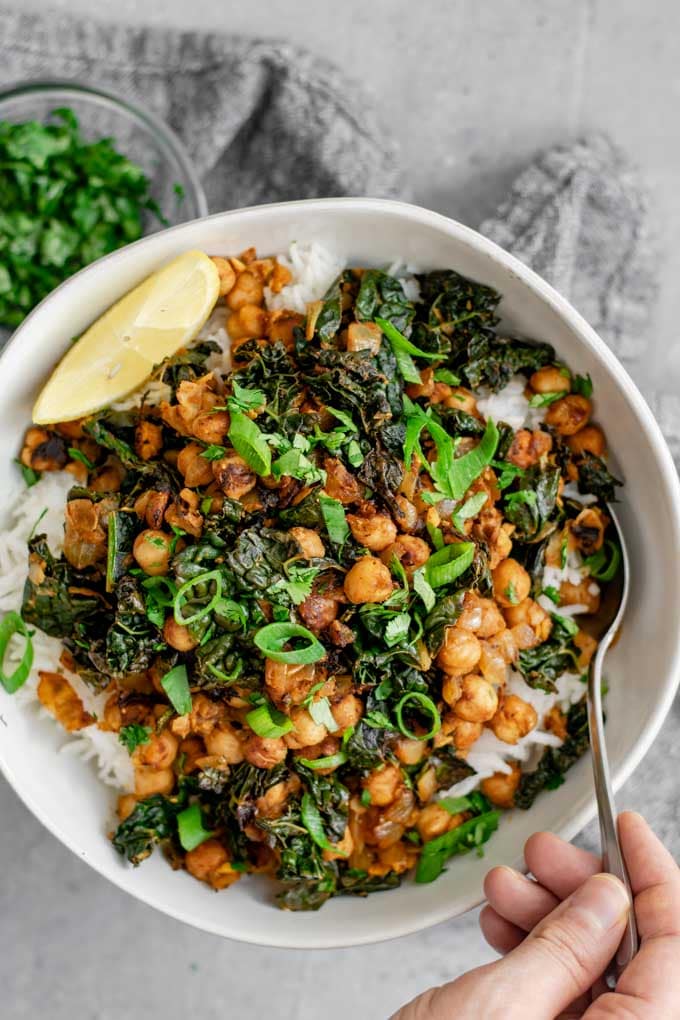
Indian Spiced Chickpeas and Greens
From The Curious Chickpea
This vegan curry can be made with any greens including the Komatsuna in the box, and you could add some of the spinach as well. The recipe allows you to adjust the heat level to your taste, too.
Storage Share, 2023
- On: November 15, 2023
 0
0
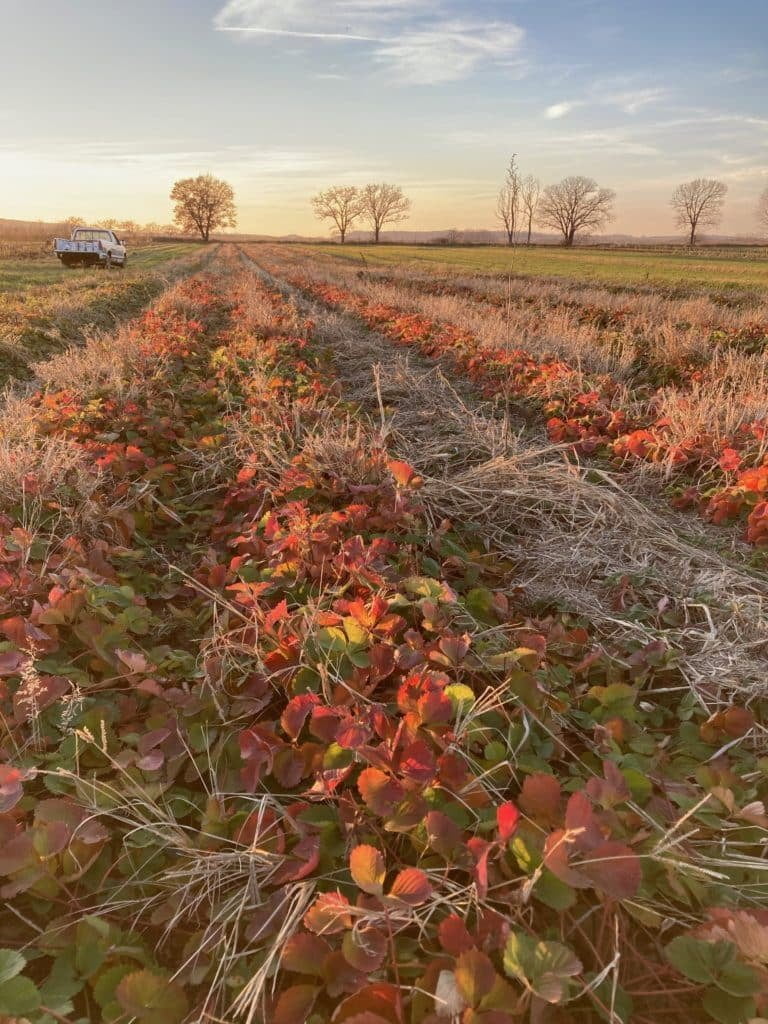
Even the strawberry plants are showing fall colors.

We are using the mild weather to bring in fall bumper crops. Here, Ken picks up stray parsnips. The harvester picks up most roots but some are skipped. The parsnips go into cold storage. We’ll wash and ship to food coops through the winter, plus carrots, cabbage, radishes, celeriac, turnips, etc etc.
Storage Share this week

Your produce is in one box labelled “A” and one box labelled “B”. Bring lots of bags and containers.
Things you need to know about your winter share
* Your delivery will consist of two different boxes, labeled “A” and “B”. Take produce from one “A” box and one “B” box. The boxes contain different vegetables. The stacks may be covered with blankets. Look around.
* Please pick up your boxes on the day of delivery, during the normal hours for your site.
* Bring extra bags or containers this time. Leave the Tipi boxes at your site, take the produce home in your own bags/containers.
* If you send someone to pick up your produce, make sure they know what to do.
Strategy
We hope you enjoy this shipment of veggies. Strategize to use them well, as some will last longer than others.
* These are the most perishable vegetables: Fennel, Romanesco.
* These are the next-most perishable: Brussels sprouts, leeks.
* Onions are next in line. We sent you our best long-storing onions but you should still store them cool if possible (but don’t let freeze). If you don’t have room in your fridge, find a cool spot in your house.
*Keep an eye on your butternut, potatoes and sweet potatoes. These last well but the last two are susceptible to drying out. Expect the largest butternuts to last the longest.
* These will last the longest: beets, cabbage, carrots, celeriac, daikon, garlic, parsnips and shallots.
Veggie List
Storage Share, Nov. 16/17, 2023 (Th/Fri sites)
Box “A”
Everything in this box can be stored cool or at room temperature. See notes below for more detail.
Garlic, 3 – 4 bulbs, some bulbs might be split in half
Shallots, 1 or 2
(Garlic and shallots are in same bag.)
‘Autumn Frost’ winter squash
Butternut squash, several
(Combined, squash are ~10 lb total)
Sweet potatoes, ~10 lb
Onions, red & yellow, 5 lb total
Russet potatoes, 5 lb
Yellow potatoes, 5 lb
Box “B”
Refrigerate everything in this box.
Beets, 3 lb, mixed red and golden
Brussels sprouts, 1.5 lb
Cabbage, 1 head
Carrots, 6 lb mixed orange, red, yellow & purple
Celeriac, 1
Daikon radishes, white & purple & red
Fennel, 1 bulb
Leeks, ~2 lb
Parsnips, 2 lb
Romanesco cauliflower, 1 head
Beets – Your bag will have mostly red beets, with a few golden beets mixed in. Refrigerate in a bag or container. Beets will store for two months or longer.
Brussels sprouts – Eat within 2 to 3 weeks.
Cabbage – Refrigerate. You can cut off sections as needed.
Carrots – Refrigerate in a plastic bag. Will keep for weeks.
Celeriac – Will store for months in your fridge. Cut off chunks as needed. Peel before using. I find it easiest to cut the celeriac into flat slices, then peel.
Daikon radishes (white, purple, red) – Cover and refrigerate. They are susceptible to drying out in your fridge so put them in a container or bag. If the skins look dry, a quick peel freshens them up.
Fennel – Cover and refrigerate.
Leeks. Refrigerate. In general, leeks are not a long-storage crop. You may need to strip off one or two outer leaves to freshen the leeks before you cook them.
Garlic – Store at room temperature. We’re sending a mix of large and small bulbs, German Extra Hardy (white wrapper leaves, large cloves) and Korean Red (purple wrapper leaves, smaller cloves). Some bulbs might be in halves, leftover from when we cracked nice bulbs for planting.
Onions: Refrigerate or store in a cool, dark spot and protect from light. Exposure to light stimulates sprouting.
Parsnips (These look like large white carrots.) – Refrigerate in a plastic bag. Parsnips will store for several months but will darken in color. That is a harmless change.
Potatoes – Can be stored at room temperature or in a cool spot, but must be kept in the dark so they do not turn green. A cloth or loose plastic bag draped over the paper bag will slow moisture loss, but do not close the plastic bag. Potatoes store longer if kept cool. Around 40 – 50 F is ideal. These organic potatoes were grown by the Igl family near Antigo.
Russets – We got the big ‘baking’ grade so you have nice bakers for Thanksgiving. Excellent for baked or mashed potatoes.
Yellows – These are good all-purpose potatoes.
Romanesco cauliflower – Refrigerate. These should store for two weeks.
Shallot (look like a small red onion) – Good for salad dressing or to caramelize.
Sweet potatoes – We’re sending a mix of two indistinguishable varieties, Beauregard and Orleans. Both have excellent flavor and sweetness. Store at room temperature, no lower than 55 F, but 60+ F is better. Keep them on your kitchen counter where it’s easy to keep an eye on them. I like to keep ours in a paper bag so they don’t dehydrate. Cook promptly if they start to soften. The roots come in a wide ranges of sizes and all are good.
WINTER SQUASH – Store all winter squash cool and dry. 60 F is ideal. Do not put in a plastic bag. Check your squash regularly and eat promptly if flaws develop.
Autumn Frost (frosted pumpkin) – This beautiful frosted squash has both pumpkin and butternut squash breeding. It cooks and tastes like an unusually good butternut, with rich, smooth texture. The skin is edible.
Butternut winter squash (tan, oblong) – All are our favorite ‘Metro’ variety. If your butternuts show signs of drying or wrinkling, use them promptly. They will still taste great, but it’s a sign that they are nearing the end of their storage life. Remember, you can cook, mash and freeze the squash for future use. I find that you can refrigerate cut raw squash for up to one week. This runs counter to the accepted way to store squash, but is useful if you want to cook just half a squash. Some of them are big!
Safety tip: Microwave your squash for one to two minutes before cutting or peeling. This softens the squash and makes a squash easier and safer to cut.
Thanksgiving Menus
Right now, websites are loaded with great recipes suited to your Storage Share vegetables. Peruse and bookmark soon. The Thanksgiving collections are taken down quickly after the holiday but individual recipes are not. This is a good chance to gather recipes to try this winter.
Smitten Kitchen
You could begin and end your Thanksgiving planning with Deb Perelman. She’s an amazing cook who publishes workable recipes. She has an extensive list of Thanksgiving dishes collected over the years. I really trust her recipes.
Food52.com
Check out their Automatic Holiday Menu Maker. They have collected soooo many vegetable and salad recipes, especially under the Soups & Salads and the Vegetables sections but also Hors D’Oeuvres and Main Attractions. I am relieved to see that they stripped out the ads this year. This section was overrun last year and disappointing.
Love & Lemons
They have a beautiful collection of “50 Thanksgiving Side Dishes”.
Squash & Sweets Share
- On: November 02, 2023
 0
0

Golden asparagus ferns at dusk.
Squash & Sweets Share
– November 2 / 3, 2023 (Thurs/Friday sites)
– These pre-ordered boxes will be available during the usual hours for each CSA sites.
– If you chose a new site for this week, please make sure you have updated site info from me. If you don’t have that info, just ask me.
Veggie List & Veggie Notes
Sweet potatoes, about 10 lbs
Winter squash, about 16 lbs.
The sweet potatoes are washed but the winter squash is only brushed and has some soil. Thanks for washing your squash this year!
Sweet potatoes (about 10 lb) – These are either Beauregard or Orleans variety, which are virtually indistinguishable.
Storage: Store covered at room temperature. 60 F is ideal. I store mine in a paper bag or cardboard box to slow moisture loss a bit. Sunlight does not harm them.
Winter squash (about 16 lb total) – We packed two Autumn Frost and the balance is butternuts.
Storage: All should be stored uncovered at room temperature. 60 F is ideal. Your kitchen counter or shelves are perfect. Keep an eye on the squash. If you see a flaw developing, cook that squash first.
Safety tip: Microwave your squash for one to two minutes before cutting or peeling. This softens the squash and makes it easier and safer to cut.
‘Autumn Frost’ squash – This beautiful frosted squash has both pumpkin and butternut squash breeding. They cook and taste like an unusually good butternut, with rich, smooth texture. This is a fairly new variety. The breeders really knocked it out of the park with this one. The skin is edible.
Butternut squash – The workhorse of squash! We are sending the flavorful ‘Metro’ variety, good for roasting or soups or casseroles or baked goods.
Week #24, Final box for May-October CSA season!
- On: October 25, 2023
 0
0
Thank you and good bye for now.
This is the final delivery of our May – October CSA season. Thank you so much for joining our farm this year. We deeply appreciate your commitment and support. And we hope that you enjoyed all the produce! Watch for an email from us in the next few weeks with an end-of-season survey.
Those of you who ordered a fall Squash & Sweets share or a Storage Share, you know who you are. If you are not certain, please check your online account, or send me an email.
What a season! From our perspective, it was a challenging year because of drought but very rewarding and productive. I’ll write in more detail when I send the survey. Right now we need to get ready for tomorrow’s delivery.
Thanks again,
Beth & Steve
A few last photos
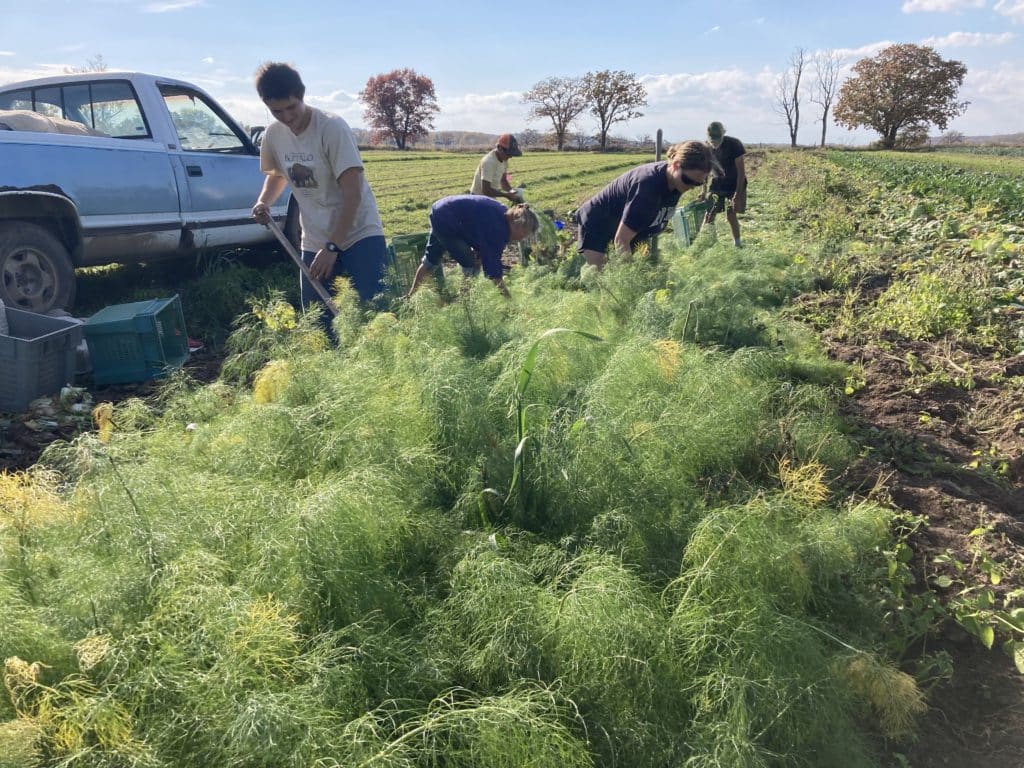
We got to harvest both your fennel (above) and Brussels sprouts during the burst of warm weather. It was appreciated and a big contrast to the years we’ve harvested Brussels in sleet.
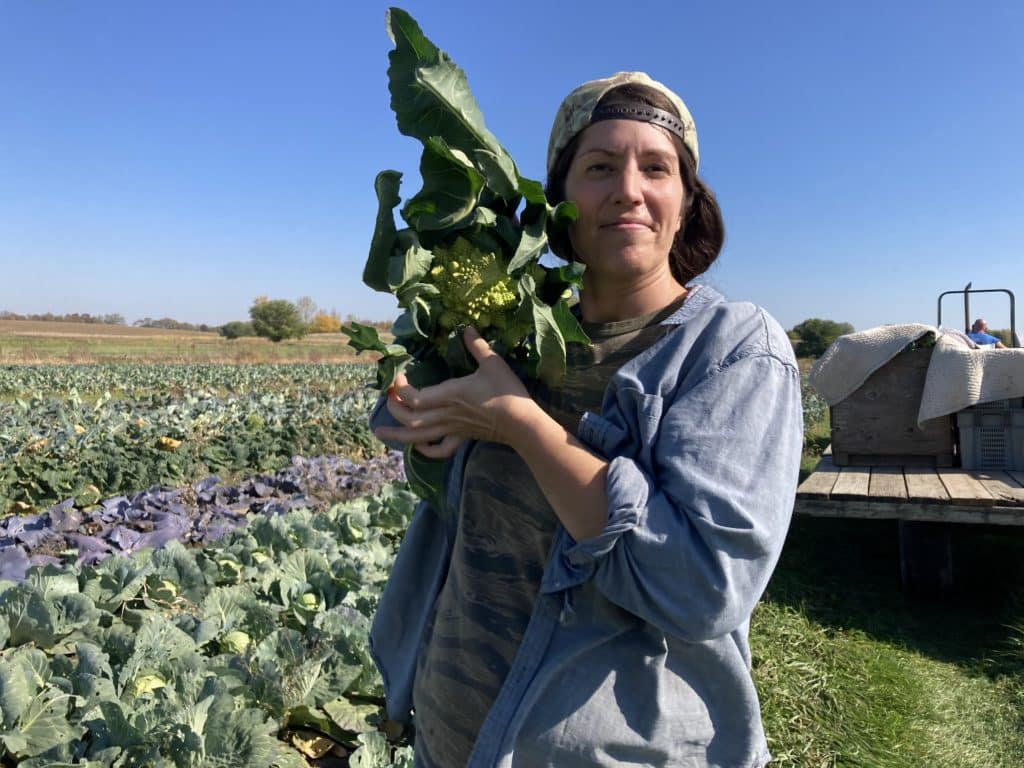
Charlotte LOVES Romanesco cauliflower. After the harvest was done, she got to keep the biggest one I could find.
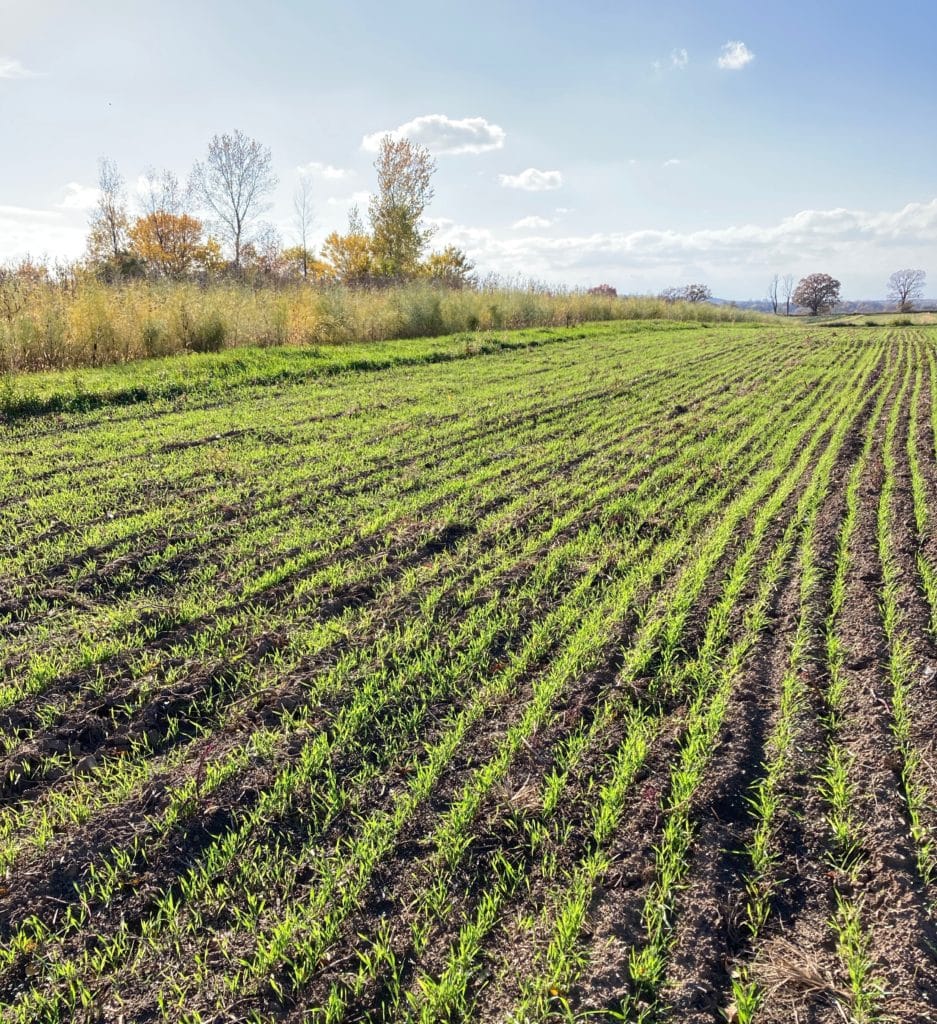
The cover crops are soaking up the late warmth and growing steadily. The farm absolutely glows on sunny days.
Last chance, Squash & Sweets Share
Registration closes on Saturday for this upcoming delivery. It’s a ‘Squash & Sweets’ box, filled with winter squash and sweet potatoes. We have great and abundant crops of both. The photo shows 9 lb sweet potatoes and 16 lb total winter squash but don’t get attached to the exact proportions; we’ll settle the ratios once we get everything out of storage.
– $42
– Check today’s email for a link to register.
– Delivery next week.
Veggie List & Veggie Notes
Week #24, October 26/27, 2023 (Thurs/Fri sites)
– Weekly shares
– BiWeekly/ green
– Sampler/ D group
Brussels sprouts, ~3/4 lb
Carrots, 2 lb
Butternut squash
Sweet potatoes, ~3 lb
Fennel, 1 or 2 bulbs, with some fronds
Poblano chile, 1
Yellow onion
Shallots, 1 bulb
Everyone gets at least one thing from this list:
Romanesco cauliflower
&/or white cauliflower
&/or purple cauliflower
&/or purple broccoli
Fennel (bulbs with a tuft of lacy fronds) – Fennel is a ‘swing vegetable’; it can be used raw or cooked. Clean well and slice as thinly as possible for use in raw salads. It is good simply prepared with olive oil, lime or lemon juice, salt and shaved parmesan cheese. Cooking softens and sweetens fennel, and mellows its anise flavor. Both the bulb and leaves are edible. Here are ideas from Alice Water of Chez Panisse about how to use fennel: ‘It’s strong anise characteristic seems to suit fish particularly well. … We use fennel all the time. We add the feathery leaves to marinades for fish and to numerous salads, sauces and soups and we use them as a garnish, too. … The bulbs are sliced and served raw in salads in various combinations with other vegetables, parboiled for pastas; caramelized and served as a side dish; braised whole; or cooked in vegetable broths & fish stocks.”
Storage: Cover and refrigerate.
Poblano chile (green or red. The only pepper in this box) – Eat soon! These were exposed to cold temperatures in the field, then harvested and held in our cooler. We’ve examined them carefully so they are in good shape now but will not store for long. It’s a last gasp of summer and I am having trouble letting go.
Shallots (look like small red onions) – Store at room temperature. Shallots store for a long time. Excellent minced for salad dressing. They will sweeten considerably when fried and can be used in Thai or Vietnamese dishes, to top burgers, etc.
For some sites: Romanesco cauliflower (beautiful chartreuse green, spiraled head) – Refrigerate. These should store well, eg for a few weeks.
For some sites: White or purple cauliflower – Refrigerate. These store for up to two weeks.
For some sites: Purple broccoli – Refrigerate. Will store for one week.
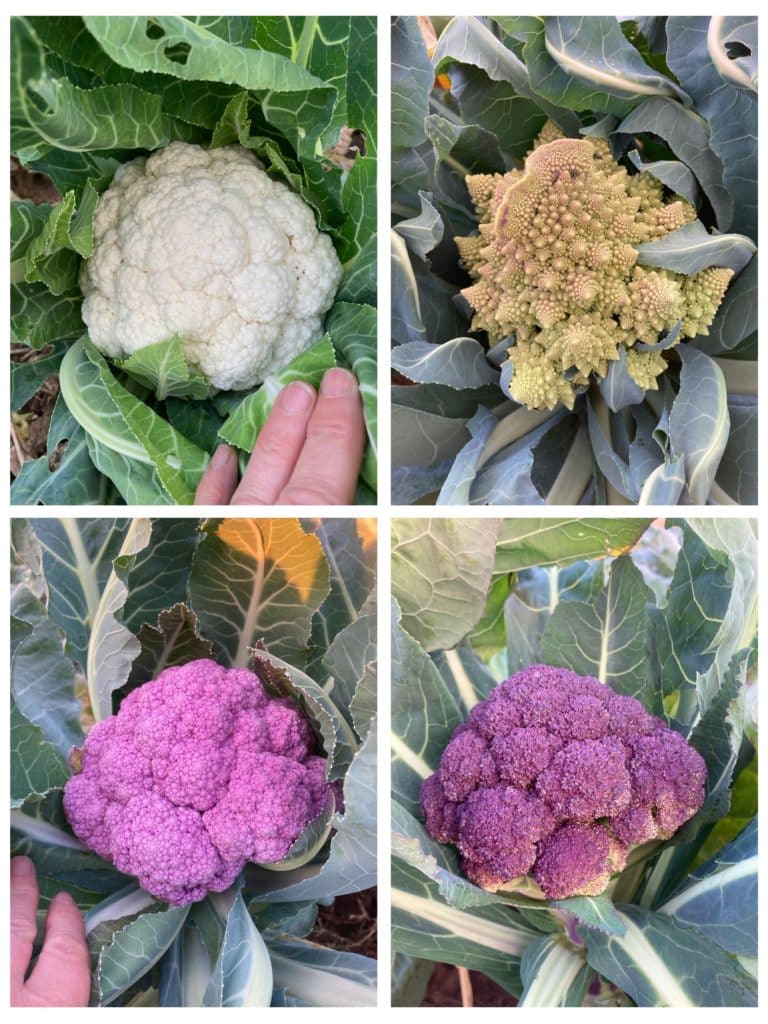
Clockwise from top left; white cauliflower, Romanesco cauliflower, purple broccoli, purple cauliflower
RECIPES by PHOEBE
Carrot Orzotto
This one-pan orzo has a similar rich flavor and creamy texture to risotto, but it comes together in a fraction of the time…and with a fraction of the stirring. Carrots, often a supporting player in the kitchen, star in this dish, adding sweet, earthy flavor and satisfying bite.
Serves 4
Prep time: 10 minutes
Cook time: 30 minutes
¼ cup extra-virgin olive oil
2 cups diced carrots (about 4 medium)
½ medium onion, diced
½ teaspoon sea salt
3 garlic cloves, minced
1 teaspoon dried rosemary
Red pepper flakes
Freshly ground black pepper
1½ cups dry orzo pasta
½ cup dry white wine
3 cups vegetable broth
½ cup grated Parmesan cheese, plus more for serving
Heat the olive oil in a large lidded skillet over medium heat. Add the carrots, onion, and salt and cook, stirring occasionally, until the carrots are tender, 10 to 15 minutes.
Add the garlic, rosemary, a pinch of red pepper flakes, and several grinds of black pepper and cook, stirring, for another minute, until fragrant. Add the orzo and stir to coat in the oil. Cook for 1 minute to lightly toast.
Add the wine and let it cook down for 30 seconds, then pour in the broth. Bring to a gentle boil, then cover, reduce the heat, and simmer for 15 minutes, stirring every few minutes, until the orzo is al dente.
Uncover and cook, stirring, for another minute, until the orzo has a saucy, risotto-like consistency. Remove from the heat and stir in the cheese. Season to taste and serve with more cheese, if desired.
.
.

Photo by Jeanine Donofrio and Phoebe Moore
Cauliflower Pasta
From Love & Lemons
This is a roast and toss pasta recipe—roast the cauliflower until it’s deeply caramelized, crisp up some homemade breadcrumbs, and then toss it all together with campanelle (or another short pasta), lemon zest, capers, and cheese. It would work nicely with white, purple, and/or romanesco cauliflower.
.
.

Photo by Smitten Kitchen
Roasted Cauliflower with Pumpkin Seeds, Brown Butter, and Lime
From Smitten Kitchen
This fun roasted cauliflower preparation is a delicious, unexpected side dish. Deb douses the tender florets in a bright, nutty brown butter and lime dressing and tops them with pepitas for crunch. Skip the cilantro if you don’t have any on hand.
.
.
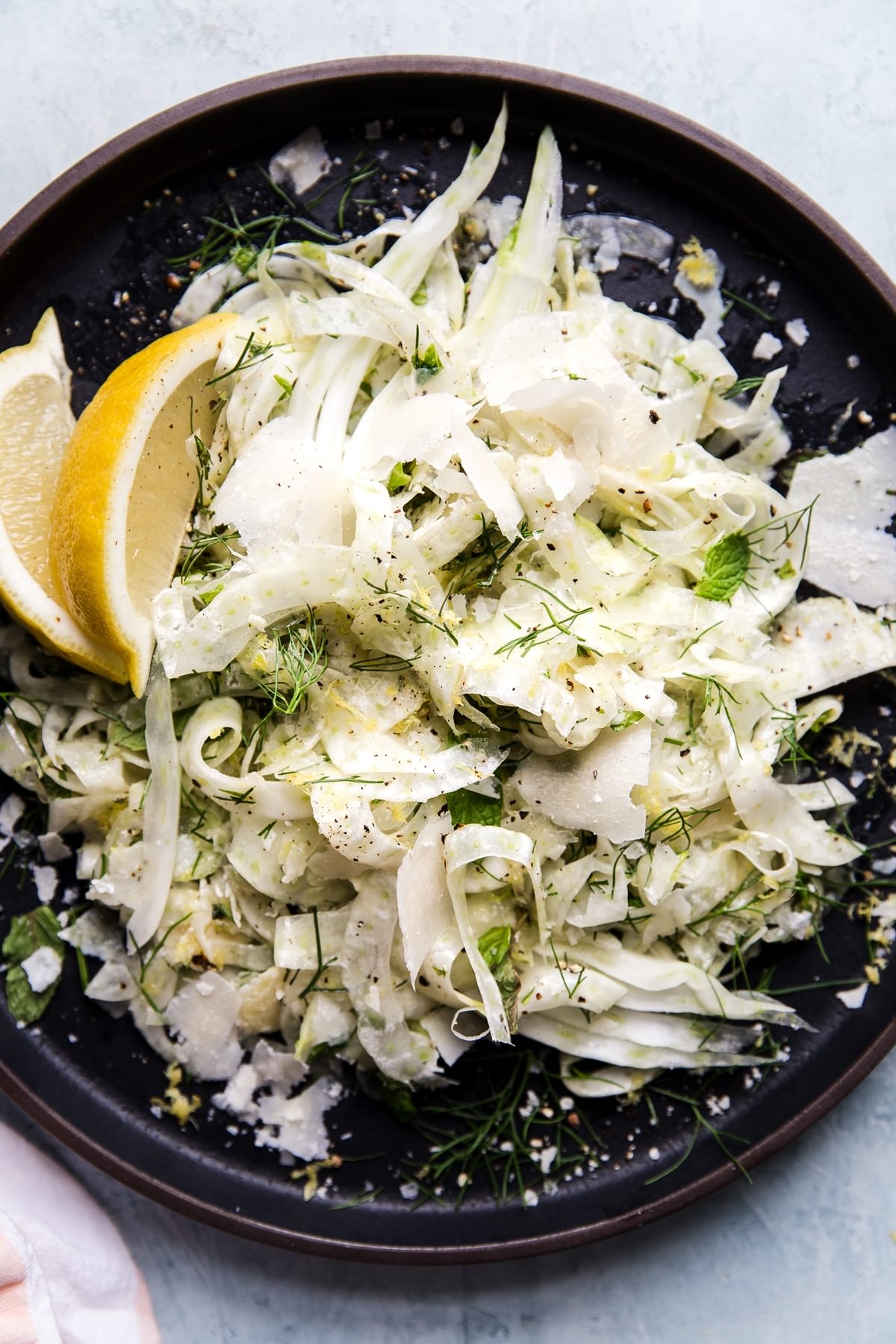
Photo by The Modern Proper
Shaved Fennel Salad
From The Modern Proper
This quick and easy salad is a refreshing side dish for a comforting fall meal. Slice the fennel as thinly as you can so that it softens in the dressing. I recommend using a mandoline slicer if you have one. If you don’t have any fresh mint on hand, replace it with a tablespoon of chopped fennel fronds.
.
.

Photo by Cookie+Kate
Creamy Thai Carrot and Sweet Potato Soup
From Cookie+Kate
This red curry soup comes from Angela Liddon’s cookbook Oh She Glows Every Day. It’s totally vegan—a scoop of almond or peanut butter creates its creamy texture. Top your bowl with tamari almonds for crunch!
.
.
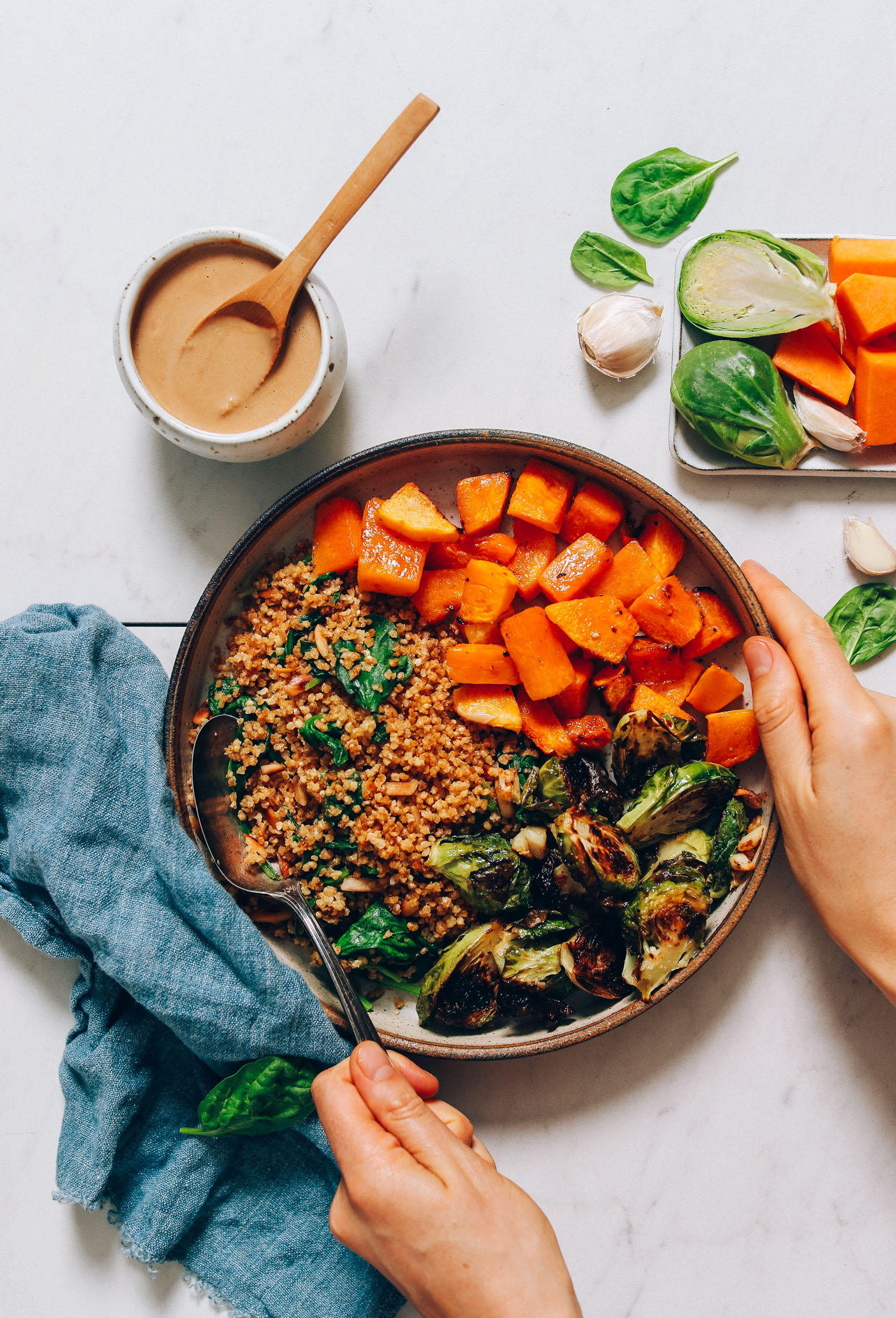
Photo by Minimalist Baker
Butternut Squash & Miso Brussels Sprouts Nourish Bowl
From Minimalist Baker
This veggie and grain bowl is flexible. You could make it as written, omitting the greens from the grain mixture, or add other vegetables from this week’s share. Roasted carrots, sweet potatoes, and cauliflower would be fantastic instead of or alongside the roasted squash.
.
.
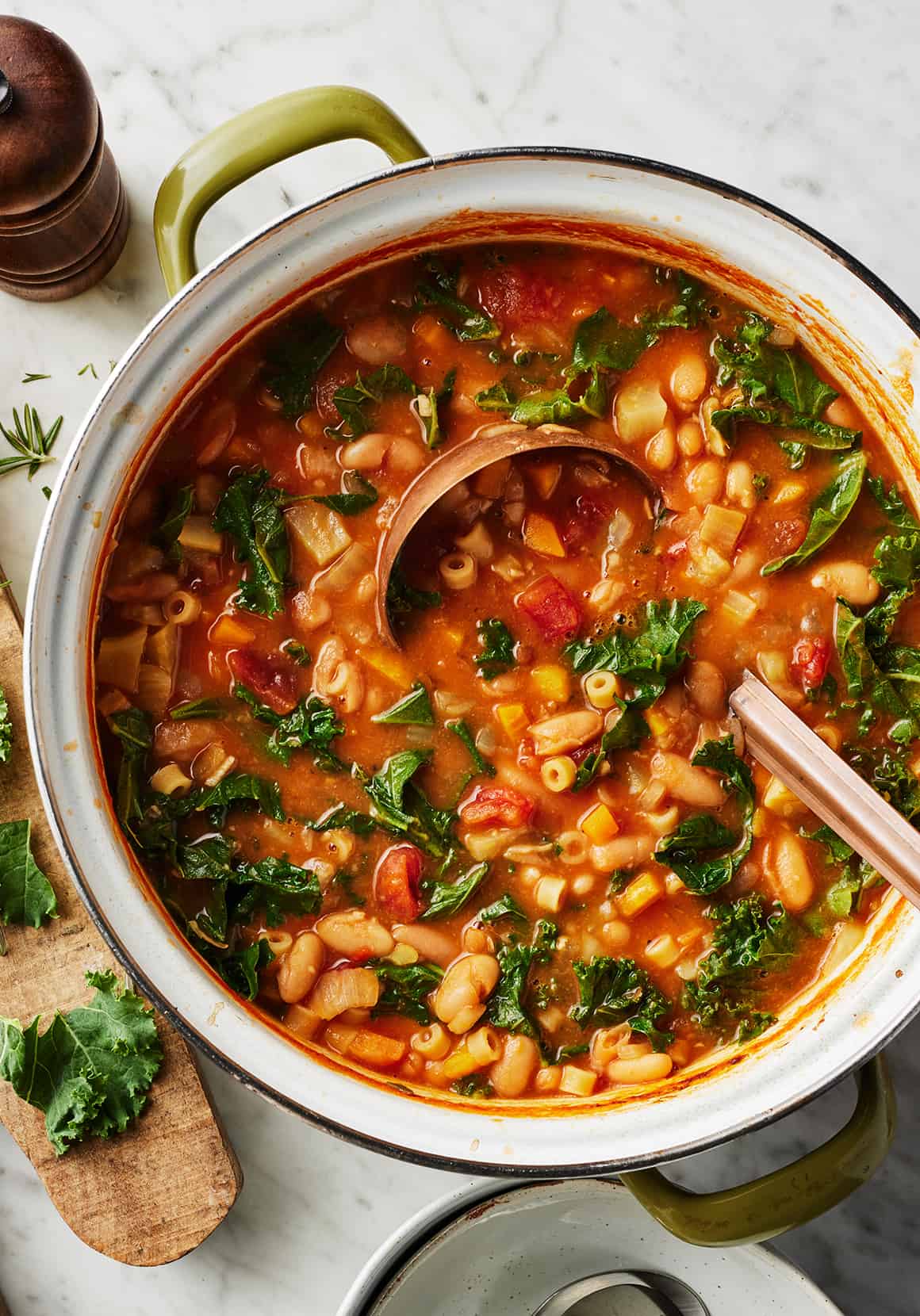
Photo by Eva Kolenko
Pasta e Fagioli
From Love & Lemons
Fennel adds rich, savory flavor to soups and stews, as this simple pasta e fagioli recipe demonstrates. Feel free to omit the kale here, or, if you like, add a few extra carrots in its place. This hearty noodle soup will be delicious either way.
Week #23, Final purple and C delivery
- On: October 18, 2023
 0
0
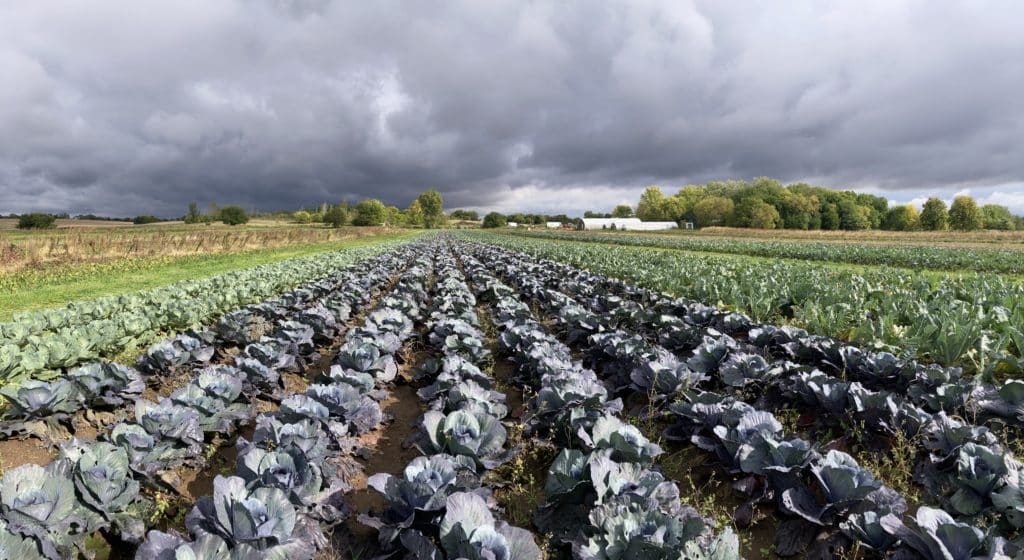
We’ve had some gorgeous fall days. Your head of red cabbage is somewhere in this photo.
This is the final CSA delivery for these groups:
– BiWeekly/ purple, and
– Sampler/ C group.
Next week will the final delivery of the entire May – October CSA season.
“Squash & Sweets” box
Check your emails from me. I sent a link to sign up for one additional box, with delivery in early November. It’s a ‘Squash & Sweets’ box, filled with winter squash and sweet potatoes. We have great and abundant crops of both. The photo shows 9 lb sweet potatoes and 16 lb total winter squash but don’t get attached to the exact proportions; we’ll settle the ratios once we grade everything.
Fun things to do in our area (Q & A from the Gleaning Party)
I enjoyed conversations with many of you during the Gleaning Party. You asked many great questions. Let me answer one of them.
Question: What are other fun things to do in this area?
A: Take a cheese tour! Here is my recommended sequence:
– Flora’s Butterfield Bakery in Albany (Thurs, Fri, Sat, Sun; 8am – noon). Stop for cheesecake, cinnamon rolls, cinnamon doughnuts and hand pies. Arrive early if you want a slice of cheesecake as she sells out fast. The cinnamon doughnuts are my favorite. Steve’s is the hand pies. Disclaimer, Flora worked for us briefly as a teenager, many years ago. She started her baking business while young and her family built her commercial kitchen in their garage.
– Maple Leaf Cheese Store in Juda (Open every day). Stock up on local cheese including award winners from Maple Leaf, Roth Cheese, etc. The prices are very reasonable. Don’t be intimidated by the setting. It looks like a truck stop but the cheese store is located in the front of the building.
– Ten Eyck Orchard in Brodhead (Open seasonally, Mon – Sun). While you are in the area, stop for apples of course. They grow an impressive range of varieties. Ask someone for help and they will explain the varieties and offer samples to taste. We’ve gotten to know sixth-generation orchardist Drew and his wife Meg. Also, they sell Flora’s doughnuts and hand pies, an option if Flora’s shop is sold out.
– Decatur Dairy in Brodhead (Mon – Sat). Have a grilled cheese sandwich and eat outside at their picnic tables. They are perched atop a hill with terrific views. Yes, the sandwiches are made with white bread. Yes, it’s more cheese than you should eat at one time. Yes, you have to be really hungry to finish that entire sandwich. Yes, my favorite is the dill havarti with dill pickles. I stop there after volunteering at prairie burns, when I am ravenous. Be prepared to wait on the weekends. Decatur Dairy recently completed a big expansion, the result of collaboration between the Decatur creamery and the 70-farm co-op that supplies their milk. I love stories like this.
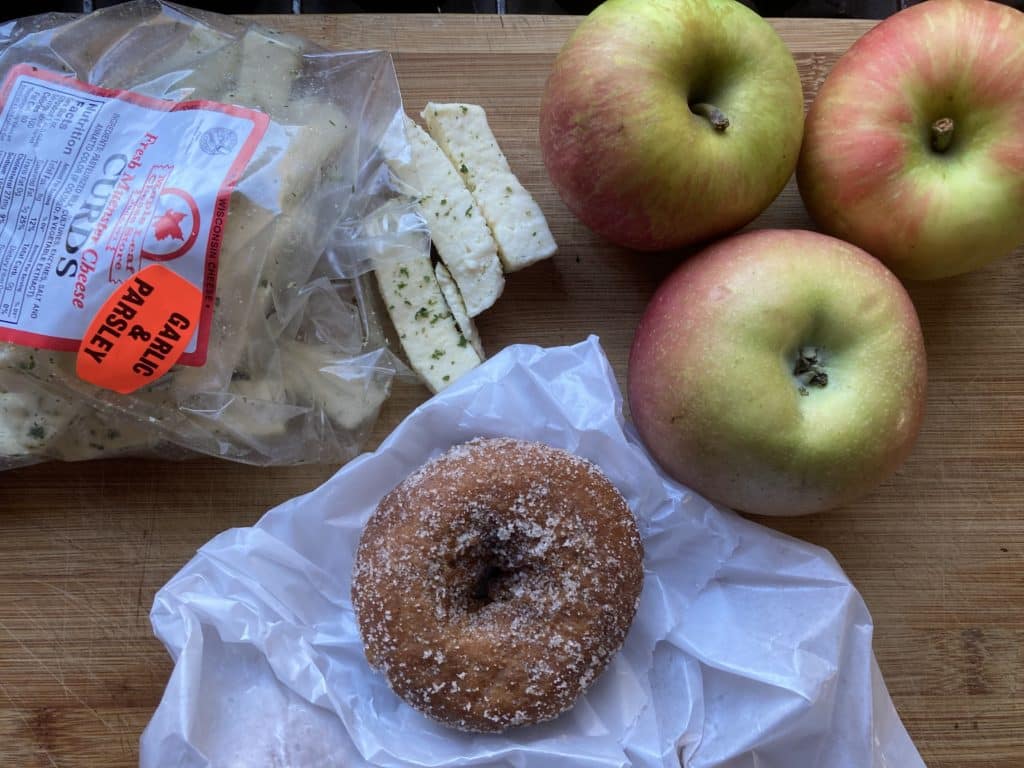
Steve and I did a mini cheese tour last weekend, which is how we ended up with a lunch like this. Clockwise from top left, Maple Leaf cheese curds, Ten Eyck apples, Flora’s cinnamon doughnuts.
A: Destination Dining
Register for a Monticello Social Club dinner for a spectacular multi-course meal prepared with local foods. We are signed up for October 28, to celebrate our last big CSA delivery. If you attend please be sure to introduce yourself! I wrote about the Social Club in a recent newsletter.
A: Visit a Prairie
The Driftless area west of us has many pockets of remnant prairie, a legacy of its untillable steep hills. I volunteer with the local Prairie Bluff chapter of the Prairie Enthusiasts, doing seed collecting, burning, etc. My favorite prairie is Muralt Bluff which is spectacular in spring and fall. The decades of volunteer effort really show. Conservation of Muralt Bluff had a dramatic beginning:
During the early 1970s Albany natives Gary Eldred and John Ochsner independently discovered this patch of unusual tall grasses and flowers. The next spring in April of 1975, together with Jonathan Wilde, Tim Hammerli and others, they dropped a match in the southeast corner and watched the fire follow the wind across the field to the north. Their suppression tools – snow shovels and burlap bags — proved inadequate to slow or stop the fire. The Albany Fire Department responded to reports of a wild fire, but they were unable to get their trucks up the bluff, so everyone stood and watched as the fire eventually ran out of fuel. Many cedar trees were scorched, the ground was blackened. But that summer the bloom of flowers – long suppressed by lack of fire – was impressive enough that the Green County Board of Supervisors was persuaded to buy the acreage.
I volunteer with John Ochsner – he is still working out there! And people still tease him about starting that out-of-control fire.
A: Eat your cheese and apples at the Sugar River
There’s a nice park between the Sugar River and mill race in Brodhead called Pearl Island with map here. Or you can wander short prairie trails to the river at Three Waters Reserve.
Veggie List & Veggie Notes
Week #23, October 19/20, 2023
– Weekly shares
– BiWeekly/ purple
– Sampler/ C group
Red cabbage
Brussels sprouts, 3/4 lb
‘Metro’ butternut squash
Parsnips, 1.5 lb
Leeks, ~1 lb
Colored peppers, ~2
Scallions, 1 bunch
Korean Red garlic, 1 bulb
Everyone gets two of these:
White cauliflower &/or purple cauliflower &/or purple broccoli
Next week’s box will probably contain butternut squash, Brussels sprouts, sweet potatoes, beets, carrots, and more.
Brussels sprouts – If you are a new CSA member, please approach Brussels sprouts with an open mind. Many of us grew up eating awful, overcooked Brussels sprouts. These Brussels sprouts are completely different.
Here is our method to cook Brussels sprouts: Wash the sprouts and trim the cut ends. Cut an X in the stem end of large sprouts. Cut a single slit in small or medium sprouts. This does two things. It helps the Brussels sprouts cook evenly, plus it allows them to soak up any marinade or dressing. Place sprouts in a pot with one inch of water in the bottom and steam until tender, 7 to 10 minutes. If the sprouts are uneven in size, then set aside the smallest ones and add to the pot after the larger ones have cooked for a few minutes. Don’t overcook them! You can also oven-roast Brussels sprouts.
Here are a few dressing ideas for cooked sprouts:
– Sherry vinegar/olive oil/Dijon mustard/garlic/white wine/salt and pepper. This is our favorite, especially when you combine the Brussels sprouts with slivered peppers and thinly sliced onions. Delicious warm, cold, or at room temperature.
– Balsamic vinegar/olive oil/garlic/salt and pepper
– Lemon juice and zest/melted brown butter/poppy seeds/white wine/garlic/salt
Butternut squash – The workhorse of squash! We are sending the flavorful ‘Metro’ variety, good for roasting or soups or casseroles or baked goods.
Storage: Store uncovered at room temperature.
Safety tip: Microwave your squash for one to two minutes before cutting or peeling. This softens the squash and makes it easier and safer to cut.
Parsnips (These look like large white carrots) – Those long, white roots are not carrots, they are parsnips. The two vegetables are related. When cooked, parsnips are sweet and starchy. For the best flavor, brown them to caramelize the sugars. Here are a few ideas for parsnip preparation:
– Caramelize the parsnips by roasting them in a vegetable medley.
– Parsnip fries are delicious: cut like French fries, oil lightly, place on a cookie sheet and roast in a hot oven until brown and cooked through.
– Try substituting grated parsnips in a potato pancake recipe. They brown beautifully and are very tasty.
– Steve loves pan-fried parsnips with onions and garlic.
Leeks (look like big scallions) – These alliums have a milder flavor than onions. Nonetheless, they can be used in recipes that call for onions. To wash, split the leek lengthwise, from the green tops about halfway to the base, leaving the base intact. Rinse well under running water, separating the layers to flush. If necessary, split the leek further if soil has penetrated more than halfway down the leek. Shake dry. Leeks are generally eaten cooked. They can be sauteed, steamed or roasted. Intact leeks will store 2 to 3 weeks if covered loosely and refrigerated. The outer leaves will yellow. Just peel them off and discard. The inner leek layers will be fine.
Pepper – This is probably the last pepper of the season. It is from a field that escaped frost damage. Eat soon – peppers that have been chilled like this are good now but might not store for long.
RECIPES by DEB
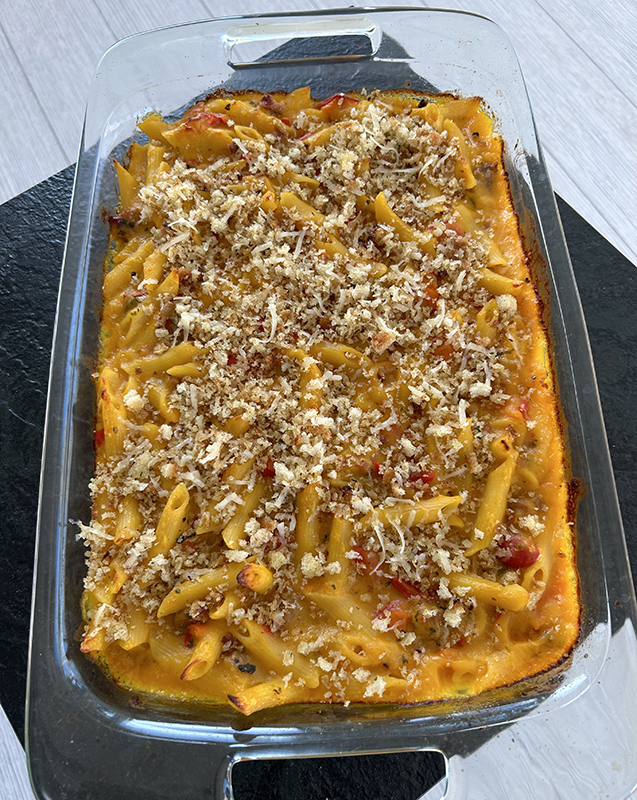
Butternut squash, sausage, and pasta bake
This pasta bake is like many others: homey and cheesy and comforting. What sets it apart is the butternut squash in the sauce, that makes the dish taste as rich as similar bakes with a lot more cheese. I’ve used ground or link pork sausage here, but try chicken or turkey sausage if you prefer, and you can make this vegetarian by subbing in some greens instead of the sausage.
Prep time: 30 mins.
Baking time: 30 mins.
Serves: 8
12 ounces pasta of your choice, I used penne
1 tablespoon olive oil
8 ounces ground Italian sausage or 3-4 links with casings removed or sliced, if it’s the type of sausage where you can’t remove the casing
1 large bell pepper, seeded and chopped
Sauce:
2 tablespoons butter
2-3 leeks, white and light green parts only, split longways and thinly sliced
2 pounds butternut squash, peeled and cut into cubes
2 to 2 1/2 cups chicken or vegetable broth, OR 2 cups reserved pasta cooking water and 1 bouillon cube
1/2 teaspoon ground or freshly grated nutmeg
1/2 cup grated Parmesan
1 1/2 cups grated cheese – sharp cheddar or a combination of cheddar and Swiss is good
kosher salt and freshly ground black pepper
Topping:
1 cup breadcrumbs (can be fresh or dried)
2 tablespoons olive oil
1 small garlic clove, minced or put through a press
1/4 cup grated Parmesan
- Cook the pasta in a large pot of well-salted boiling water until it’s a bit underdone, since it will be baked. Drain, reserving 2 cups of the cooking water if you are not using broth. Drop the bouillon cube into the reserved pasta water to melt while you prepare the other parts of the dish.
- Heat the olive oil in a large skillet, and brown the sausage. If using ground sausage, break it into smaller clumps with a wooden spoon as it browns. If you have any other type of link sausage, slice it and brown in the oil. Add the chopped bell pepper and continue to cook until the pepper is soft. Remove from the heat and set aside.
- Melt the butter in a large pot or Dutch oven with a lid. Add the leeks and a generous pinch of kosher salt, stir, and cover. Reduce the heat to low, and cook until the leeks are soft but not brown, about 10 minutes. Add the squash cubes and the broth (or pasta water/bouillon mixture), cover, and simmer until the squash is tender, about 10 minutes. The squash cubes should be submerged; add a little more water if necessary. Remove from the heat and puree until smooth using an immersion blender. You can also use a food processor or blender but cool the mixture for about 10 minutes before proceeding. Add the nutmeg and the Parmesan and grated cheese(s) and stir until the cheese melts. Taste and season with salt if needed and freshly ground pepper.
- Heat the oven to 400°. Stir the sausage mixture and the pasta into the sauce and spread into a 9 x 13 x 2 baking dish. Bake for 20 minutes until bubbly.
- For the topping, heat the olive oil in a pan and add the minced garlic. Add the bread crumbs, stir to coat with oil, and cook a few minutes until the crumbs are slightly toasted and the garlic is fragrant. Set aside to cool. After the pasta has baked for 20 minutes combine the 1/4 cup Parmesan and the crumbs, which should be cool by now, and top the pasta with this mixture. Bake for 10 more minutes and serve.
Lemony Roasted Parsnip Hummus | power hungry
From power hungry
I think most of us are familiar with roasting parsnips to bring out their natural sweetness. Here roasting is taken one step further, and the roasted parsnips are pureed with lemon and garlic and almond butter to make hummus. You could sub in the more traditional tahini for the almond butter if you like.
.
.

Roasted Cabbage Salad with Sesame Honey Red Onions | Justine Doiron
From Justine Snacks
This roasted cabbage salad is made with green cabbage, but red cabbage will work just as well. At the website, it’s shown served on toast spread with labneh or strained yogurt, but could also be served without the toast, or on toast spread with a little goat cheese.
.
.
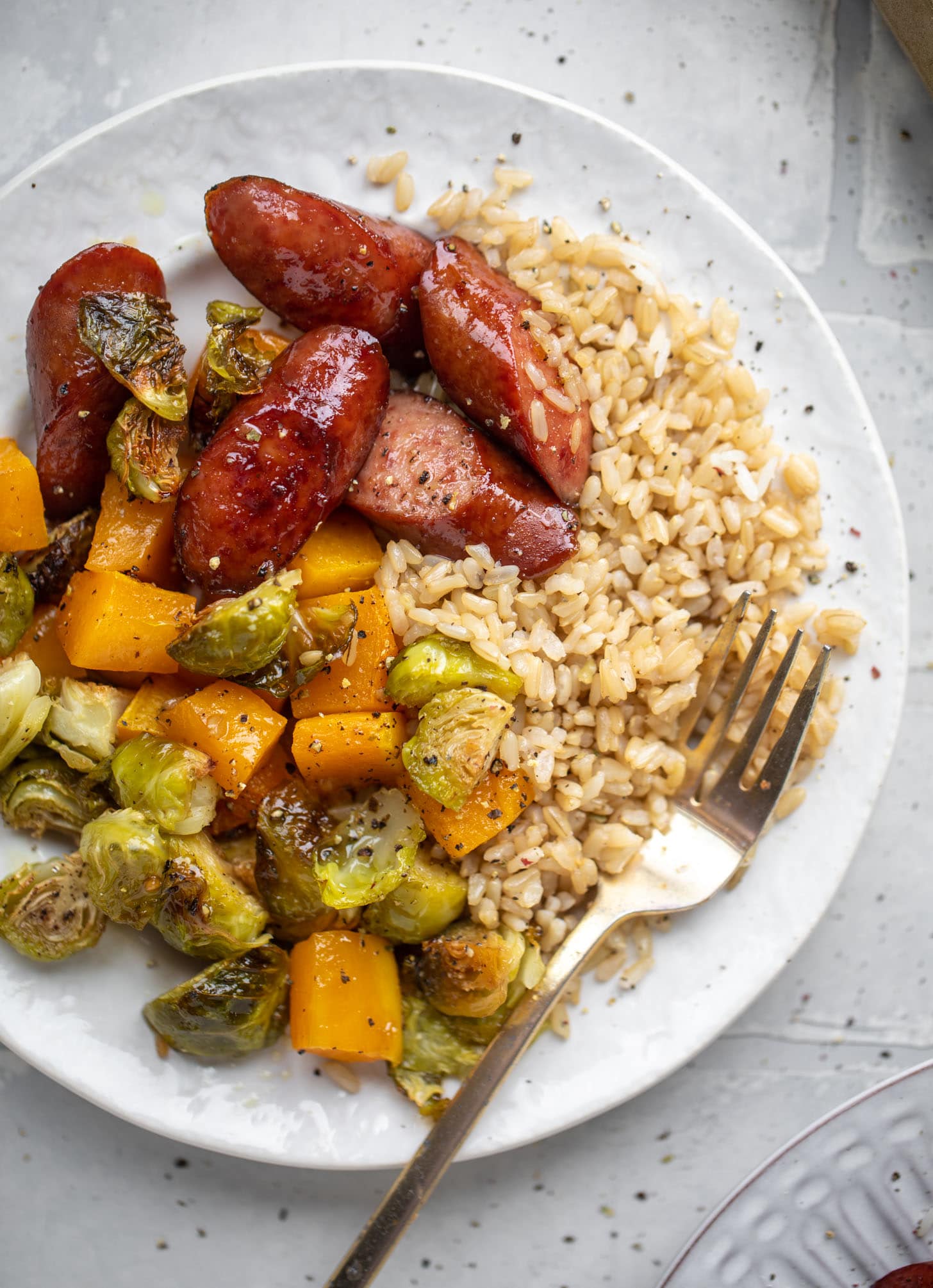 Photo by Jessica Merchant
Photo by Jessica Merchant
Maple Sheet Pan Sausage with Butternut Squash and Brussels Sprouts | How Sweet Eats
From How Sweet Eats
Sheet pan dinners are quick and easy and this one transforms our Brussels sprouts, garlic, and butternut squash into dinner. The recipe suggests serving this with brown rice; buttered noodles or orzo would be a nice alternative.
.
.

Braised red cabbage with apple and bacon | DebsLunch
From DebsLunch
This is a traditional, slightly sweet-sour, red cabbage preparation. If you’d like to make it vegetarian/vegan, omit step one, frying the bacon, and start with step 2, sauteing the onions in 2-3 tablespoons of olive or vegetable oil.
.
.
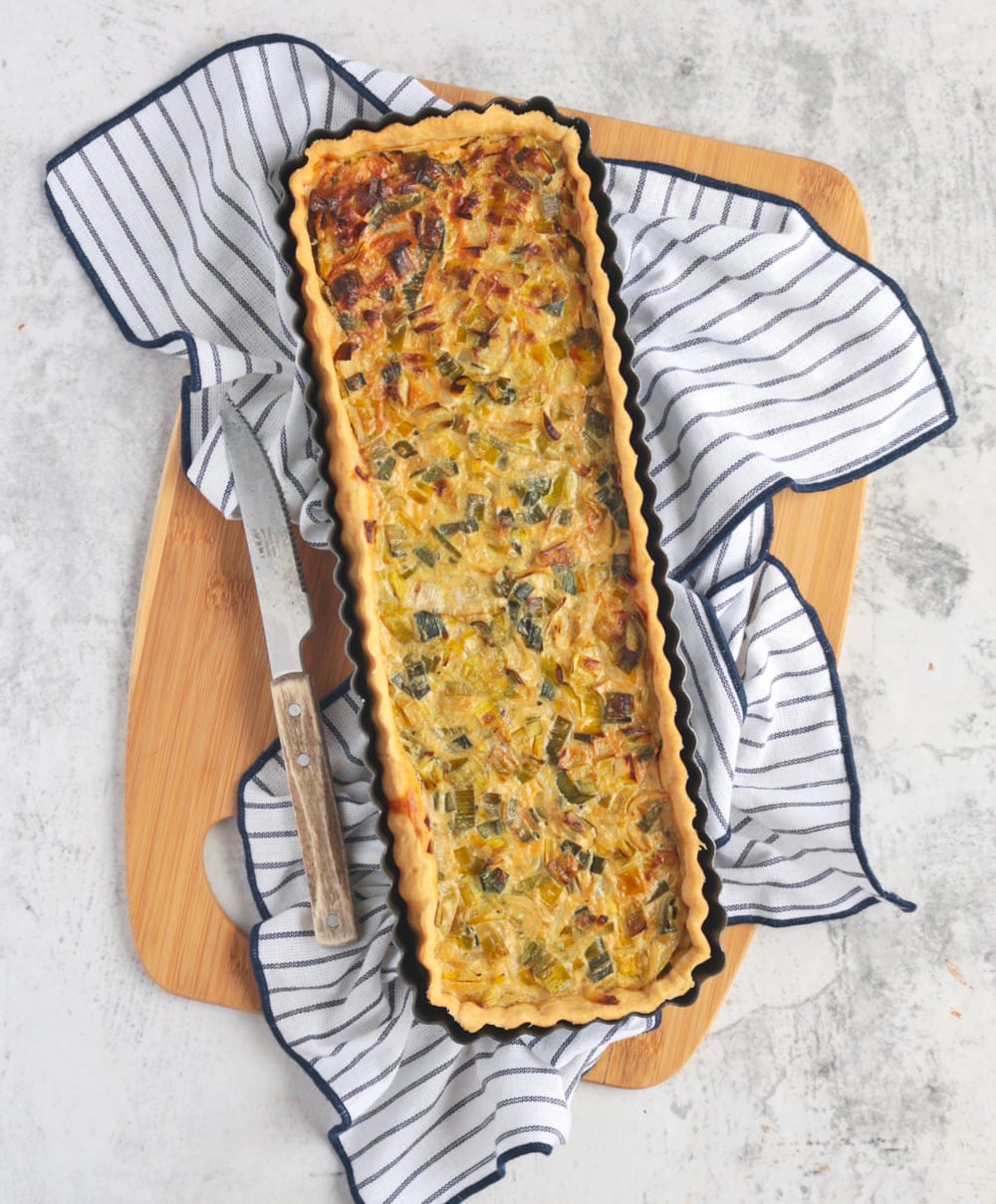
Leek Tart with Gruyere and Onions | A Baking Journey
From A Baking Journey
There are tons of recipes for leek tart or leek quiche floating around on the Web – I chose this one since it is mostly leeks and cheese and also has good instructions for making your tart dough and fitting it into the pan. The recipe suggests blind-baking the crust and does not provide instructions for that – so here is a set from Sally’s Baking Addiction. The recipe calls for one small brown onion, which is the Australian name for yellow onions (that have a brown skin). If you like you could could double the leeks and omit the brown onion. Personally, I’d sub nutmeg for the optional cumin.
.
.
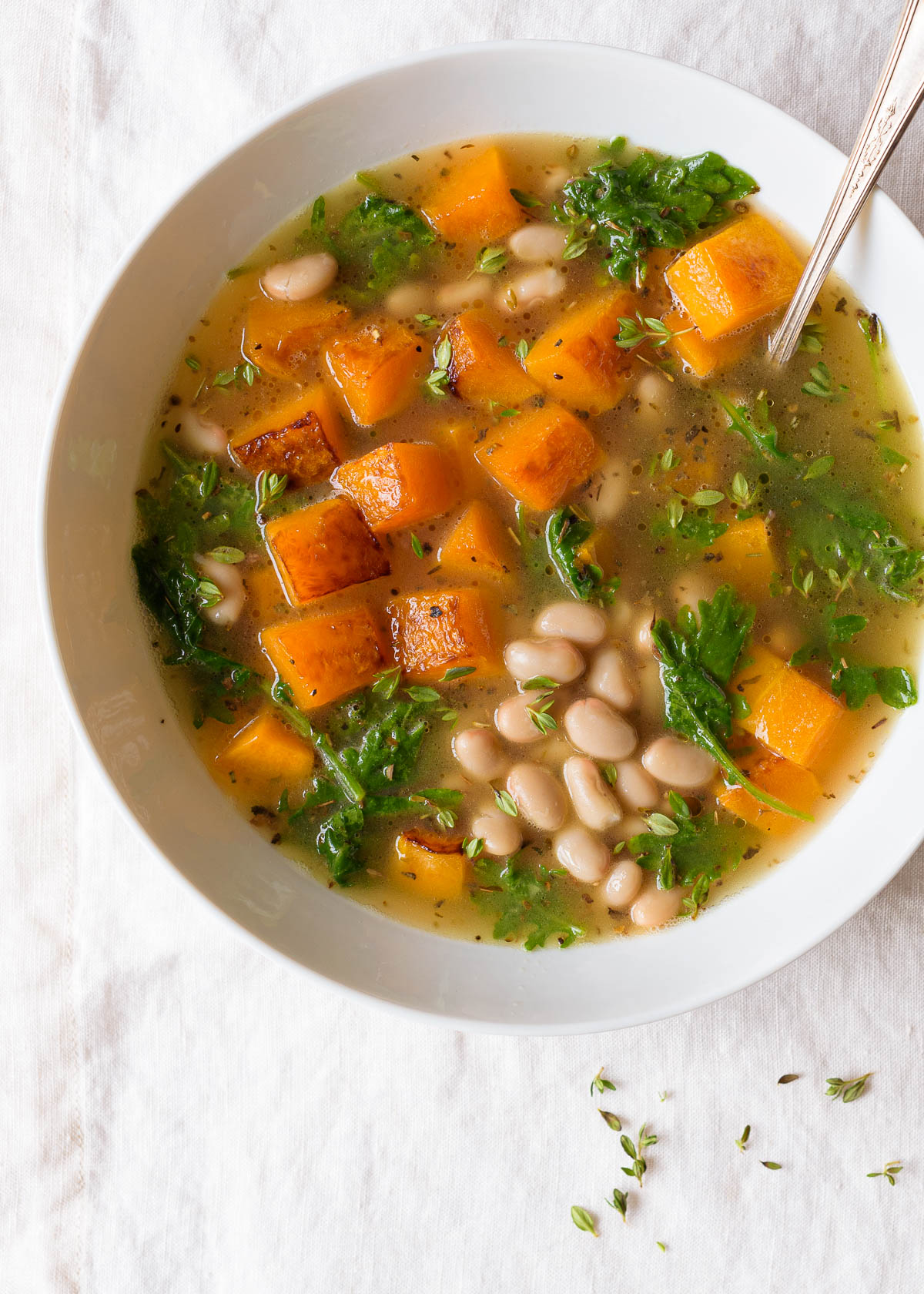
Tuscan White Bean and Butternut Squash Soup | Fork Knife Swoon
From Fork Knife Swoon
This is a brothy soup featuring butternut squash, perhaps a nice change from soups with pureed squash that are more common. Any greens we get in the box this week, or even chopped broccoli or cauliflower, could be subbed for the kale, and a garnish of thinly sliced scallions and Parmesan cheese would be tasty.
Week #22, final Sampler/B box
- On: October 11, 2023
 0
0
The gleaning party was a success! The weather was mild; chilly but dry and not too windy. The sky was beautifully quilted with clouds. Everyone found treasures to take home. The most popular gleaning crops were pumpkins, flowers, basil and kale/collards. I will tell you, those pumpkins were fully ripe in mid-August! It is a miracle that they remained solid and beautiful for almost two months. This is unprecedented.
Basil was a last-minute gleaning crop. By the weekend, we knew it would suffer cold damage on Sunday night, so I offered entire plants to take home. The farm smelled amazing!
Quite a few people hiked to the back of the farm, to explore or to glean winter squash. Steve and I both enjoyed talking with so many of you. We always learn something new when you visit.
Beth & Steve
Veggie List & Veggie Notes
Week #22, October 12/13, 2023
– Weekly shares
– BiWeekly/ green
– Sampler/ B group
Autumn Frost winter squash
Carrots, 2 lb
Poblano chilies, 2 (packed in bag of carrots)
Daikon radishes (white or purple or red)
Bok choy
Colored peppers, ~2
Yellow onion
Scallions
Garlic, 1 medium bulb
By site: purple OR white cauliflower OR smaller cauliflower plus Romaine lettuce
Next week’s box will probably contain butternut squash, red cabbage, greens and more.
‘Autumn Frost’ squash – Store cool and dry. 60 F is ideal.
This beautiful frosted squash has both pumpkin and butternut squash breeding. They cook and taste like an unusually good butternut, with rich, smooth texture. This is a fairly new variety. The breeders really knocked it out of the park with this one. The skin is edible.
Poblano chiles – Your chilies could be green or red. We packed them in the bag of carrots so they will be easy to identify.
Korean radishes – These are a favorite vegetable among our farm crew. Crunchy Korean radishes are sweeter and milder than Japanese daikon radishes and come in a more manageable size. They contain lots of water, which makes them easy to pickle or ferment. You’ll receive at least two of the colors we grow: white, red and purple.
Storage: Refrigerate.
Uses: Maangchi rules for radish ideas! Head to her website for dozens of radish recipes. She has the best website for Korean recipes. Her Radish Kimchi recipe is close to foolproof and easy to scale.
More uses: Phoebe has a recipe below for “Quick pickled vegetables” that can be made with grated carrots and daikon. It’s like the pickled slaw served on bahn mi sandwiches.
Scallions – Your scallions will need a little extra prep. I asked the crew to trim roots and wash, but not do our usual full prep, to save time on a busy day. Just pull off an outer leaf or two.
Garlic – This is German Extra Hardy variety, the type with large cloves.
Cauliflower – You’ll get purple or white cauliflower. FYI, the purple color darkens when cooked.
Storage: Refrigerate.
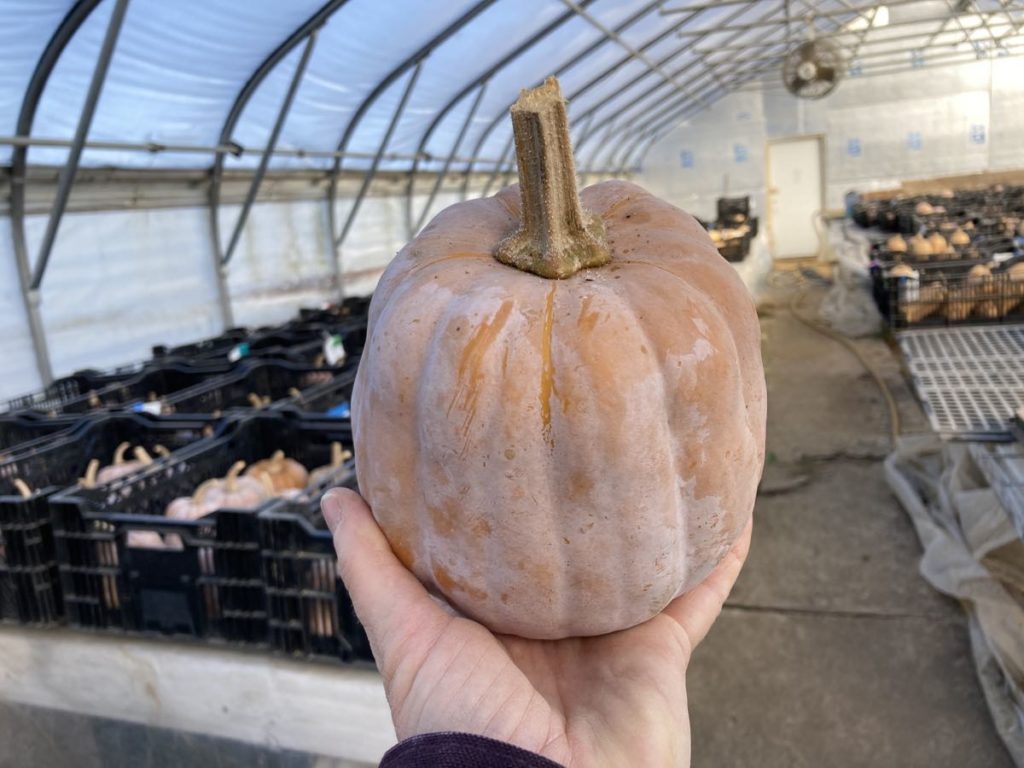
Pretty, pretty Autumn Frost winter squash.

You will receive at least two of the daikon colors we grew this year; white, red and purple.
RECIPE from BETH
Steamed Coconut Custard in Autumn Frost
Thai pumpkin custard is a treat, and can be prepared in an Autumn Frost pumpkin. That’s my custard in the photo above. Autumn Frost really is that color inside! I based my version on these recipes, with alterations.
Thai Pumpkin Custard, from Cooking with Lane
Thai Pumpkin Custard, from Amporn’s Thai Kitchen
Beth’s notes.
– I’ve only made this in a steamer.
– Steam your hollow squash for 25 minutes before adding the custard mixture. Otherwise, your squash is overcooked by the time the custard is set.
– I’ve never used pandan leaves.
– The linked recipes call for coconut milk or coconut cream. I substitute a mixture of coconut milk and oat milk as I prefer it less rich. I’ll pull together my cooking notes this weekend and will share my custard mixture here and on the Facebook group page.
RECIPES by PHOEBE
Pepper Lovers’ Pizza
Love peppers on pizza? This recipe is for you! It stars colorful roasted peppers, tangy pepper jack cheese, and red pepper flakes for an extra kick of heat. You can use any of the peppers from your share here—just keep in mind that the poblanos will increase the spice level.
Serves 2 to 3
Prep time: 20 minutes
Cook time: 30 minutes
6 ounces mixed peppers (bell, frying, poblano, etc.), stemmed, seeded, and thinly sliced
¼ onion, sliced into thin wedges
Extra-virgin olive oil, for drizzling
Sea salt
2 tomatoes from a can of whole peeled San Marzano tomatoes
1 cup grated low-moisture, part-skim mozzarella cheese
1 cup grated pepper jack cheese
Cornmeal, for stretching the dough
1 pound pizza dough, store-bought or homemade*
2 garlic cloves, thinly sliced
½ teaspoon dried oregano
Red pepper flakes, for sprinkling
Preheat the oven to 425°F and line a baking sheet with parchment paper.
Place the peppers and onions on the baking sheet, drizzle with olive oil, and sprinkle with salt. Toss to coat and spread evenly on the baking sheet. Roast until soft and browned around the edges, 15 to 20 minutes. Remove from the oven and set aside. Increase the oven temperature to 500°F.
Place the whole peeled tomatoes in a medium bowl and use your hands to crush them into a slightly chunky sauce. Add ¼ teaspoon sea salt and stir to combine.
In another medium bowl, place the mozzarella and pepper jack cheeses and toss to combine.
Dust another large baking sheet or pizza pan with cornmeal. Place the pizza dough on the baking sheet and stretch it into a large circle or oval. Spread the tomatoes evenly over the dough, leaving a 1-inch border around the edges. Top with all but ¼ cup of the cheese mixture, then top with the roasted peppers, onions, garlic, and dried oregano. Sprinkle the remaining ¼ cup cheese on top.
Bake for 10 to 15 minutes, or until the cheese is bubbling and the crust is golden brown.
Remove from the oven and sprinkle with red pepper flakes. Slice and serve.
*If using store-bought dough, let it sit at room temperature for 1 hour before stretching.
Quick Pickled Vegetables
From The Modern Proper
These quick pickled carrots and daikon would be a great addition to a homemade banh mi, but the uses for them don’t end there. Pile them onto a burger or BBQ sandwich, add a scoop to a grain bowl, or top them onto cold sesame noodles.
Boiled Daikon Radish
From The Woks of Life
If you’re used to eating radishes raw, you might be surprised how much you enjoy this simple boiled daikon recipe. The cooking process mellows the radish’s bite, yielding a delicious, nourishing side dish.
Butternut Squash Mac and Cheese
From Love & Lemons
This ultra-comforting mac and cheese features a creamy sauce made from part cheese, part roasted squash. The recipe calls for butternut, but autumn frost squash would add exceptional flavor!
Maple Tahini Glazed Cauliflower with Chipotle
From The First Mess
Purple and white cauliflower are both fair game here! The smoky chipotle seasoning and sweet, nutty tahini sauce will make them irresistible.
Ginger Peanut Chicken with Coconut Rice
From Pinch of Yum
In this satisfying weeknight recipe, a gingery, peanut-y medley of chicken thighs, scallions, and bok choy tops a fragrant bed of coconut rice. Omit the cilantro if you don’t have any on hand.
Chicken Wonton Soup
From Smitten Kitchen
Homemade wonton soup is the perfect cozy cooking project for a rainy fall day! Finish the soup with chopped bok choy instead of spinach.



